- Speaking Topics
- How to Play
- Online Course
- Affiliate Program

How to Play 52 Essential Critical Thinking Cards
Ways to play, level 1: knowledge-building.
TAKE TURNS DRAWING A CARD COLLECT 15 TO WIN.
"Bias Blitz"
Announce the cognitive bias name on the top of the card. Players shout out the definition based on the name. The first to guess correctly wins the card. If no one does, reveal the definition and return the card to the draw pile.
"Critical Contemplation"
Read the definition and quote on the card without revealing its name. Players take turns naming this cognitive bias. The player with the closest or funniest name wins the card.
LEVEL 2: COMPREHENSION
TAKE TURNS DRAWING A CARD COLLECT 10 TO WIN.
"Cognitive Conquest"
Read the example on the card out loud. Players take turns guessing the bias name and the cognitive assumptions it involves. The player who guesses correctly collects the card.
"Bias Breakdown"
Explain the concept on your card in terms a 5-year-old would understand. If your explanation helps others guess correctly, you collect the card.
LEVEL 3: REAL-WORLD APPLICATION
COLLECT 8 TO WIN.
"Gaslight Gambit"
Place all cards face up. Watch the news or a political debate. The first player to verbally identify a bias being committed collects the card. BONUS: explain why the bias happened.
"Bias Baffle"
Players take turns describing a scenario from their personal or professional life without naming the bias. Player who guesses correctly collects the card.
LEVEL 4: ANALYSIS
"cognitive clash".
Players take turns choosing two cards that either amplify or counteract each other’s effect. Collect the cards if you successfully persuade the other players of your logical reasoning behind the pairing.
"Bias Breakthrough"
To collect a card, explain strategies we can take to mitigate or avoid the bias. Bonus: describe how implementing these strategies could lead to positive changes.
LEVEL 5: EVALUATE
LAY ALL CARDS FACE UP LEAST NUMBER WINS.
"BS Buster"
Review a social media post, ad, or an opinion article. Identify and summarize any sentences that use cognitive bias to persuade you to do or think a certain way. What impact could these have on readers' views or choices?
"Bias Beacon"
Come up with questions that would expose the bias (assumptions, flaw in thinking) in the identified sentences from above.
Take the Implicit Bias Quiz
Coming soon: bonus scenarios..
Join our newsletter to get notified.
Build Vocabulary with Word Analogies
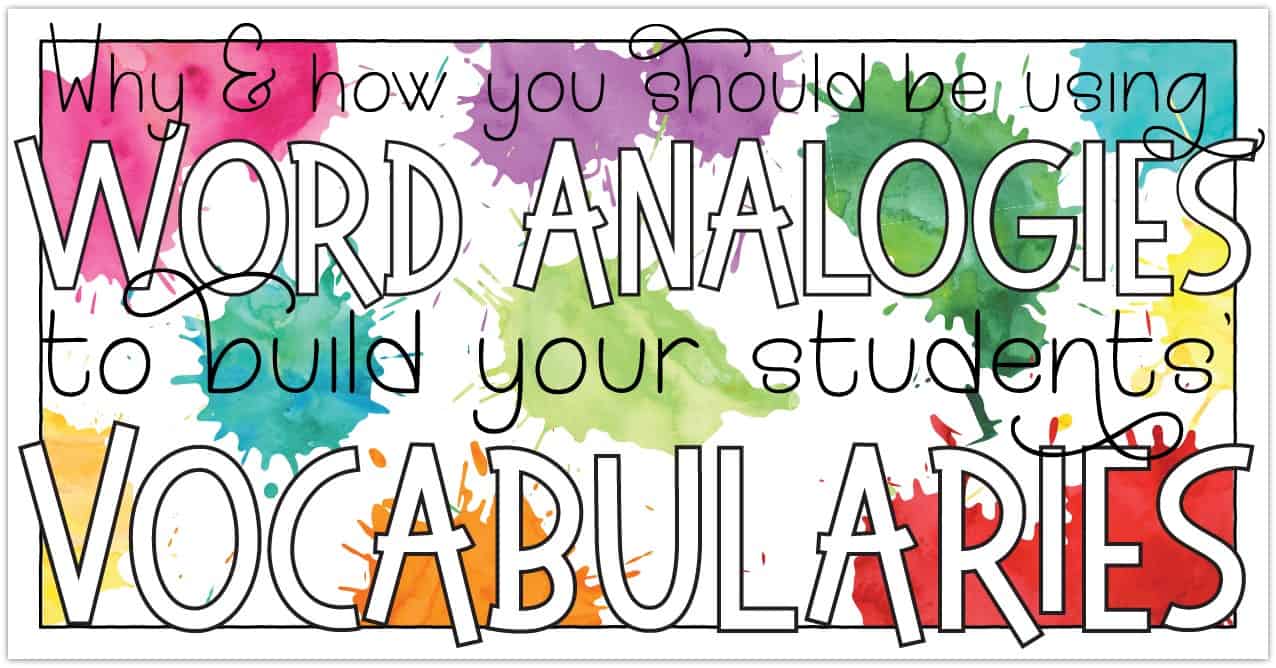
When students work with analogies, they…
- expand and deepen their vocabulary.
- understand the relationships between ideas and words.
- recognize and understand multiple-meaning words.
- think critically and apply logical reasoning.
- learn to decipher word meanings based on context.
- build a network of understanding that improves retention and aids future learning.

With an understanding of bridge sentences and the types of analogies, your students will be set up for success! Present them with leveled word analogies that will allow you to increase the difficulty as their skills and vocabularies improve.
Click on the images below to download free sets of word analogies.

Click here for a FREE PowerPoint of the various slides included in this post .

- Depth and Complexity
- End of the School Year
- Reading Comprehension
- Reading Fluency
- Uncategorized

LATEST ON INSTAGRAM
Jump to navigation
- Inside Writing
- Teacher's Guides
- Student Models
- Writing Topics
- Minilessons
- Shopping Cart
- Inside Grammar
- Grammar Adventures
- CCSS Correlations
- Infographics
Get a free Grammar Adventure! Choose a single Adventure and add coupon code ADVENTURE during checkout. (All-Adventure licenses aren’t included.)
Sign up or login to use the bookmarking feature.
Vocabulary for Critical Thinking
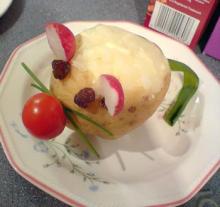
Photo courtesy of thepurplefreak from Flickr Creative Commons.
Do you know what a mouse potato is? It’s a person who spends too much time staring at a computer screen. Mouse potatoes are the couch potatoes of the 21st century. In fact, Merriam Webster just added the term mouse potato to its august dictionary.
Perhaps you know a few mouse potatoes. Perhaps you are one. But just learning the term mouse potato suddenly makes you think about how much time you spend in front of the computer. That’s the power of vocabulary. It enables thinking. The size of your vocabulary impacts the size of your mental world.
Vocabulary as Inquiry
All right, so you’re saying, “Here we go—vocabulary. It’s so elementary.” Yes, it is—as in the word element : the building blocks of everything. In fact, the origin of the word elementum is the first three letters of the Canaanite alphabet. When we talk about elements, we are reciting our Canaanite ABCs.
Do you see how one word— elementary —has taken us from language arts to science to social studies? Do you see how knowing that elementum is the same as ABCs influences how we think about the Periodic Table of the Elements , about elementary school, about Holmes’s constant insistence that it is “ elementary , my dear Watson”?
A word doesn’t have just one meaning. It is freighted with meaning. In its prefixes, roots, and suffixes, each word stores the DNA of human experience.
Vocabulary therefore shouldn’t be rote memorization. It should be inquiry.
How Can I Use Inquiry to Teach Vocabulary?
As with all forms of inquiry, you start by stepping back. You don’t have to know all of the connections for a given word. You might not even know what the word means, so you can discover right along with your students.
Imagine that you are a reading teacher. You want your students to understand plot structure, so you present them with the plot chart. Students’ eyes roll. Great—they have to learn more dusty-dry vocabulary terms like “exposition.” You could provide students with a definition and tell them they have to know the term for the test, but then the vocabulary never gets beyond the most superficial level of thought: memorization.
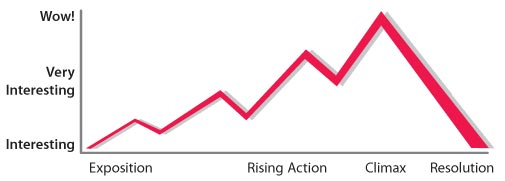
exposition: the beginning of a story; the part of the story that establishes a setting and introduces characters
Or you can use inquiry to explore the term and get students to think critically about it. Tell your students to work with the word, break it apart, and think about each piece.
Ex. Ask students what that means. They’ll probably say “former,” as in ex-president. They might also say “out,” as in “exit.” So, that’s the first piece, but let’s set it aside and consider the next part.
Position . Have students brainstorm meanings of position —“posture” or “location” or “placement” or “point of view”—or all of these. What does posture have to do with the exposition of a novel? Everything! The author is introducing you to characters, and their postures are critical to understanding them. The author, too, is assuming a kind of literary posture. The exposition lets us know what kind of a story it is going to be. What does location have to do with exposition? Everything! The exposition establishes the location, or setting. How about placement? How about point of view? Then have students strip the word further.
Pose. Students know what that means. A person can strike a pose in order to communicate something— I’m cool or I’m tough or I’m a rock star . A person can also pose objects in specific locations and arrangements. Isn’t that what the author is doing in the exposition of a novel? If pose means to “place” something, then ex pose must mean to “place it out.” Exposition is like placing the pieces out on a chessboard. It’s like setting up a game.
Exposition. After they take the word apart and examine it, have students put the word back together and guess at its meaning. Only then should the group look at the exact dictionary definition. Then have students find other contexts in which the word has meaning. For example, in music, exposition is the first statement of a melody in sonata form. In social studies, the Columbian Exposition of 1893 was a chance for the nations to “place out” their greatest cultural achievements. Everybody was getting ready for the new millennium—the 20th century—and so that exposition was very much like the beginning of a story.
So, exploring the meaning of exposition gets students to think critically about stories and authors, characters, settings, plots, and literary devices. It also connects the term to many things beyond stories. Treating vocabulary as inquiry makes hundreds of new connections in students’ minds. Instead of teaching just one meaning for one context, you help students explore the vast network of meaning in many contexts.

Mouse Potatoes Unite!
The fact that you are now reading the end of this post shows that you are perhaps at risk of being a mouse potato. But even that term, as trivial as it might seem, overflows with meaning. Mouse potato came from couch potato , just as computer screens evolved from televisions. The computer, of course, is only implied by the word mouse , which itself began as a playful allusion to the little controller with the long tail. And the word potato connects to the round shape of those who get too little exercise—but it also connotes their vegetative state. The connections continue.
Words are doors. They can be opened up, or they can be locked tight. By teaching vocabulary as inquiry, you can help students open the doors to critical thinking and learning.
We want to hear from you! What vocabulary terms are you most interested in? What vocabulary inquiry have you done? Please write your comments below.
Teacher Support:
Click to find out more about this resource.
Standards Correlations:
The State Standards provide a way to evaluate your students' performance.
Related Resources
All resources.
- Take Note of Podcasts
- Creating Pie Graphs
- What are literacy skills?
- Unlocking Literacy Across the Curriculum
- Key Skills and Strategies for School Success
- Reading and Writing for Literature Assessment
- Practice Test for Literature Assessment
- Reading and Writing for Assessment
- Practice Test for Reading and Writing
- Inquire Online Elementary Classroom Set
- Inquire Elementary Teacher's Guide
- Inquire Middle School Teacher's Guide
- Inquire High School Teacher's Guide
- Inquire Elementary
- Inquire Middle School
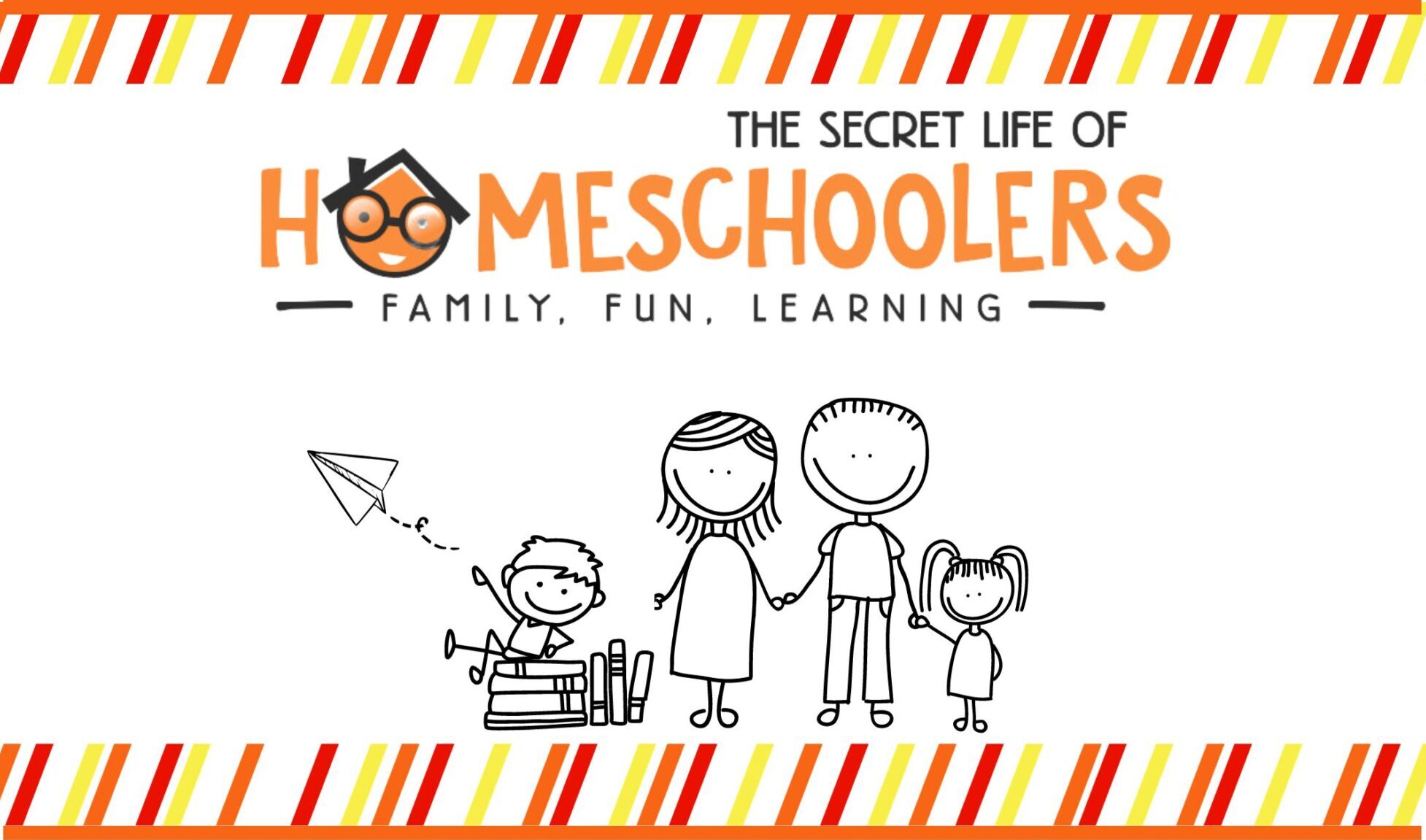
Using Critical Thinking Activities to Help Master Middle School Vocabulary
- Post author: Sharon
- Post published: October 5, 2021
- Post category: Curriculum and Resources / Language Arts
- Post comments: 0 Comments
Disclosure: I received this complimentary product through the Homeschool Review Crew .
Do you have a middle schooler in your homeschool? I do. Plus, I’ve already got one through the middle school years. I have found that grades 6-8 are kind of prepping kids for high school. They learn to work more independently, and the workload increases. It is also a time when the work gets more challenging. Vocabulary becomes important to learn because kids come across more complex words in their reading, especially in the different subjects they are learning. Therefore, I was excited to add Vocabulary Virtuoso: Mastering Middle School Vocabulary by The Critical Thinking Co. in our homeschool. Finally, my seventh-grader was ready to start adding in vocabulary work with some great critical thinking activities.
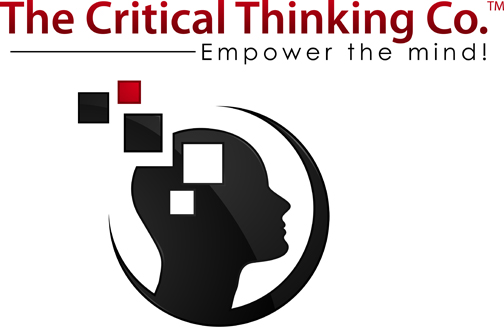
A Little About Vocabulary Virtuoso
Vocabulary Virtuoso: Mastering Middle School Vocabulary is a vocabulary program for grades 6-8. The Critical Thinking Co. has many products to help build kids’ critical thinking skills, and this product is no exception. Within the program, kids will learn 12 new vocabulary words with each list. There is a total of 15 lists in the book. The words on each list are words you will often find on PSATs. So, this is great to help improve reading and writing vocabulary skills and prep them for future exams.
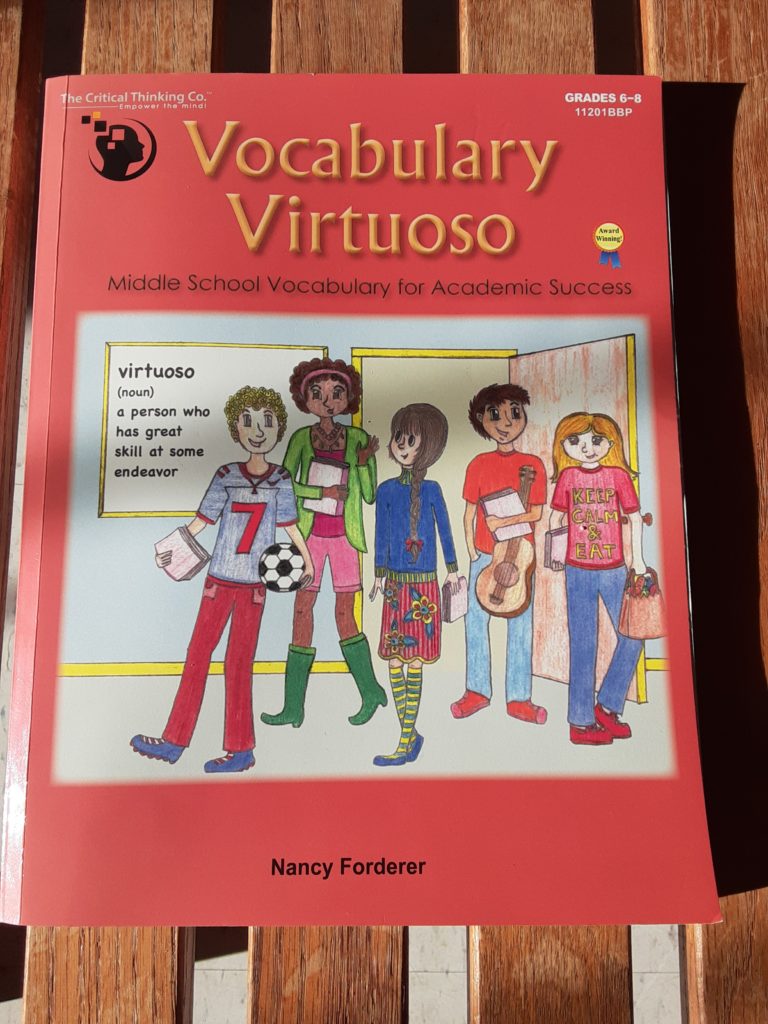
Encouraging Critical Thinking Through Meaningful Activities
Each lesson begins with the word list. For each vocabulary word, there is:
- Pronunciation key
- Part of speech
- Alternate words or phrases (such as idioms and synonyms)
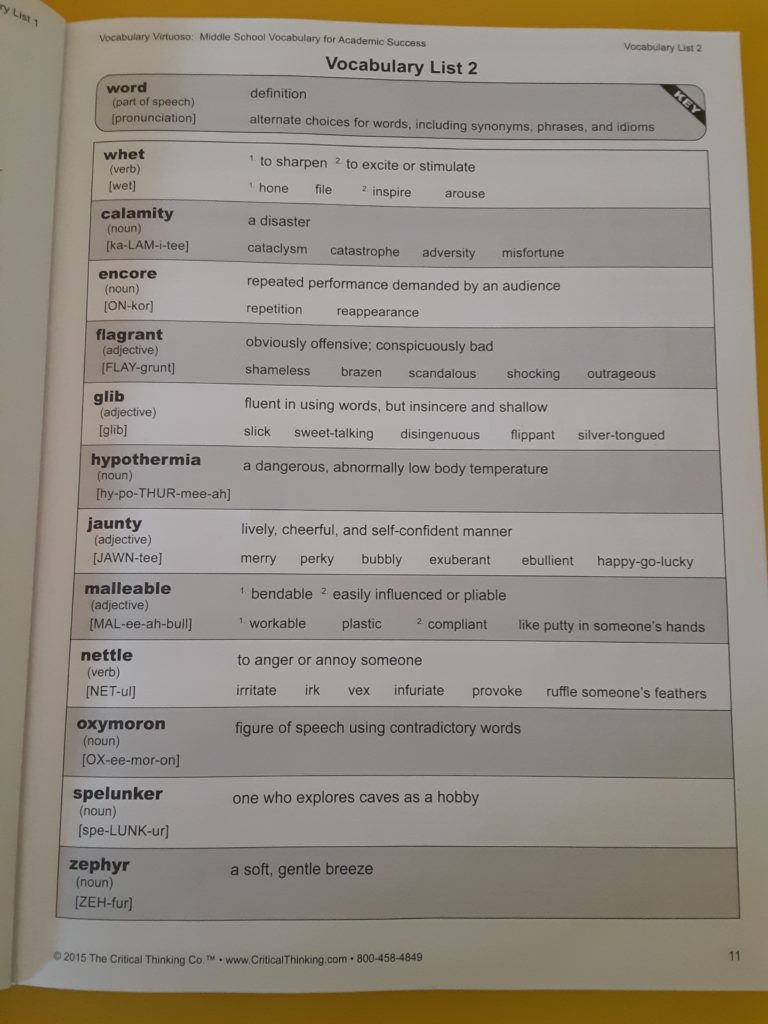
After the word list, there are six critical thinking activities to help kids practice the meaning of each vocabulary word.
- Fill in the blank – In the first activity, kids read the sentence and choose which of the three wordss completes the sentence. In another activity, they fill in the blank, selecting a word from the word bank.
- Unscramble the word- For this critical thinking activity, the sentence has an underlined word that is a synonym, idiom, definition, or phrase of a vocabulary word. Next to the sentence is a vocab word, but it is scrambled. They unscramble the word that matches the meaning of the underlined word in the sentence.
- Story Challenge – In this activity, kids are given a story. Throughout the story, there are blanks in which kids use one of their vocabulary words to make the story complete.
- Write a synonym, idiom, or phrase – At the top of the page is a box with words, idioms, or phrases. Below is a list of the vocabulary words. Kids use the items in the box to define the vocab word.
- Write your own sentences- The final activity has the kids apply some critical thinking. They now must write their own sentences using the words from their list.
There is a nice variety of activities to help kids practice the meaning of each word. And throughout, each activity seems to get a little more challenging.
One interesting approach I haven’t seen before that this book does is using variations of the words. In some of the activities, there is an asterisk next to a word. That means the word has been altered in some way.
For example, in one sentence, the word used was audacious. However, the list word was audacity. This is a great way to show how words change and become a different part of speech. After all, kids aren’t always going to come across their vocabulary words exactly as written on their list.
Using this Vocabulary Book in Our Homeschool
For this review, my 7 th -grade son used this book. My boy hasn’t done a vocabulary program before, so I was anxious to give it a try. He worked independently on this program. First, he’d read through his list, paying attention to the definitions and alternate words listed. Then he’d complete one of the critical thinking activities each day.
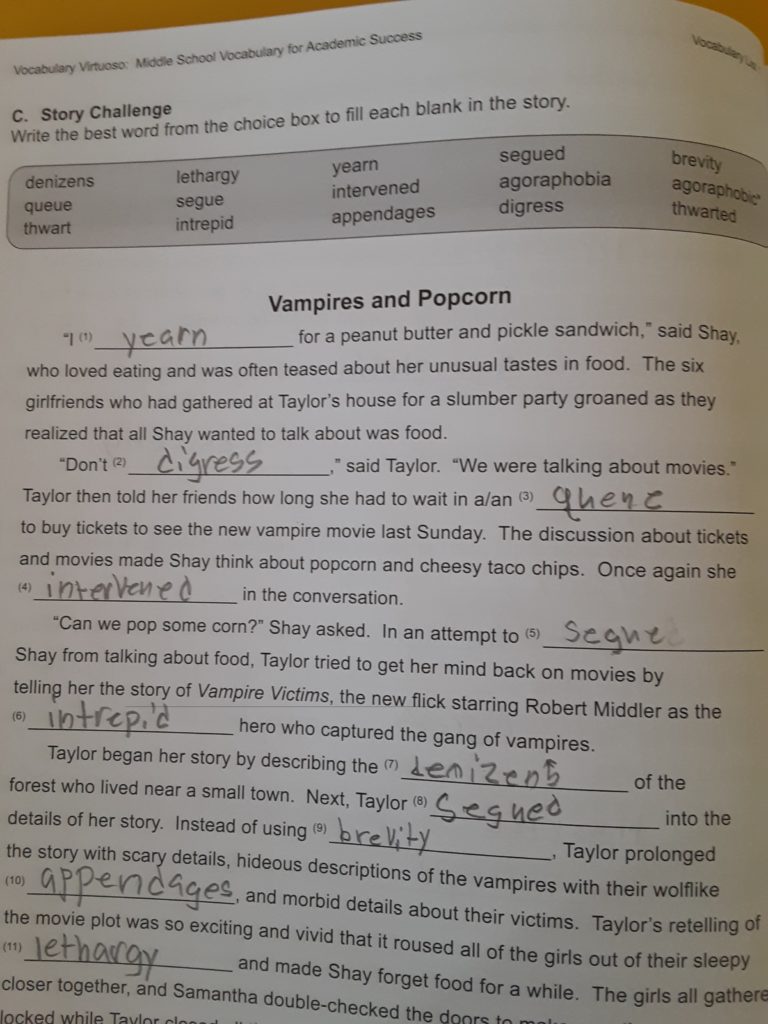
At first, he expected each word to be used once and used as it appears in his word list. That was my fault. I forgot to warn him. So when he began the first activity, he was baffled because there were 24 fill-in-the-blank sentences. Each word may be used twice, however, you didn’t necessarily use each word once and then go back through the list. Noooo. You might use another word twice before you used one word for the first time. But, honestly, I liked that the program didn’t follow a predictable pattern. It keeps kids on their toes and using some critical thinking skills.
After the first lesson and my boy realized that the words may change their form, he figured things out. Overall, he was able to work independently which he liked.
I thought the Story Challenge would be… well, a challenge for my kiddo. He struggled a bit through the first one but then did fine on the others. He needed to adjust to this program and learn to pay attention to his words. Once he did so, he did very well. I knew he was genuinely learning the words because he wasn’t struggling with the activities, AND he was using the words correctly in his own sentences.
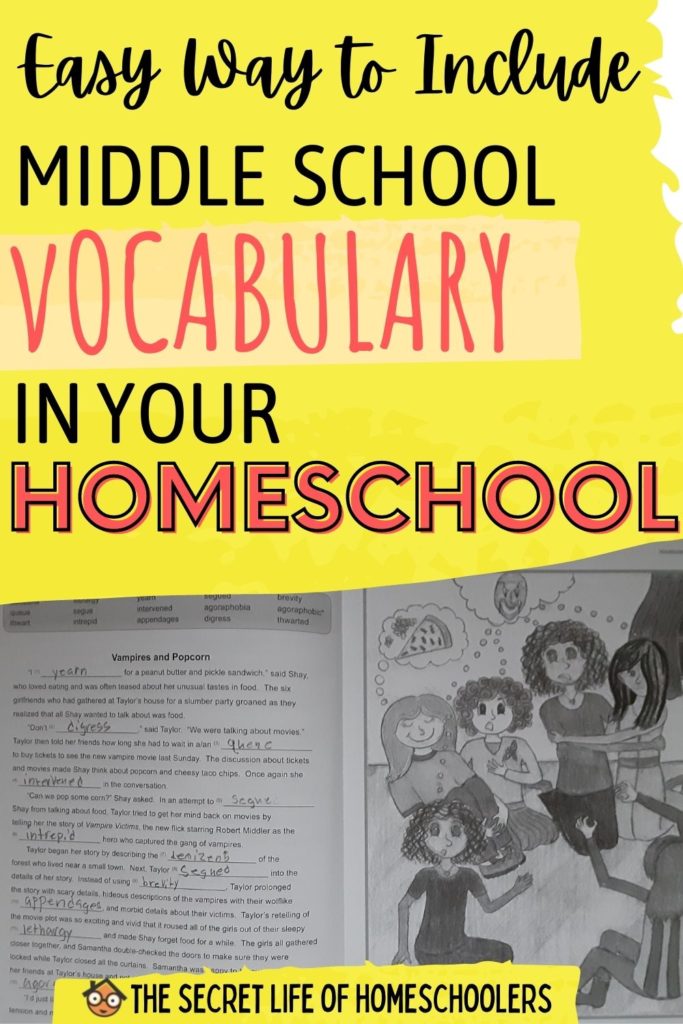
My Son’s Thoughts
Overall, my kiddo really liked Vocabulary Virtuoso. He liked the activities and never complained about doing vocabulary. I thought I’d certainly hear a lot of complaints with the sentence writing, but I didn’t. So that’s a win right there!
When I asked my son if he thought the program helped, he said, “Yes! I’m finding my vocabulary words in things I’m reading. The other day I saw segue.” Well, that’s another win.
I was pleased to see this program was working for my son. The Critical Thinking Co. provides some good critical thinking activities for learning vocabulary. I wasn’t so sure it would work for my boy, but it did.
My Final Thoughts on the Critical Thinking Co. Product
One thing I wished the program included was some kind of review. This way, it would keep the words fresh in kids’ minds. I plan to come up with my own periodic review because I know that is something my son needs.
All in all, I am pleased with the program because my son likes it, and he feels it is helping him build his vocabulary. We will continue to use this book in our homeschool.
Critical Thinking Co. has many other great products for a variety of ages. Click the banner below and read reviews on other great critical thinking activities this company has to offer.

Happy Homeschooling!
You Might Also Like
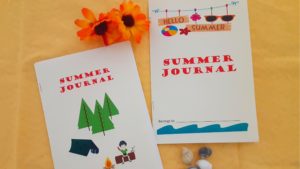
A Printable Summer Journal for Kids to Keep Track of Summer Fun

5 Fantastic Valentine’s Day Poetry Activities for Kids of All Ages

How to Make History Fun: Ways to Get Kids Excited to Learn
Leave a reply cancel reply, privacy overview.
Translate this page from English...
*Machine translated pages not guaranteed for accuracy. Click Here for our professional translations.
Glossary of Critical Thinking Terms
accurate : Free from errors, mistakes, or distortion. Correct connotes little more than absence of error; accurate implies a positive exercise of one to obtain conformity with fact or truth; exact stresses perfect conformity to fact, truth, or some standard; precise suggests minute accuracy of detail. Accuracy is an important goal in critical thinking, though it is almost always a matter of degree. It is also important to recognize that making mistakes is an essential part of learning and that it is far better that students make their own mistakes, than that they parrot the thinking of the text or teacher. It should also be recognized that some distortion usually results whenever we think within a point of view or frame of reference. Students should think with this awareness in mind, with some sense of the limitations of their own, the text's, the teacher's, the subject's perspective. See perfections of thought.
ambiguous : A sentence having two or more possible meanings. Sensitivity to ambiguity and vagueness in writing and speech is essential to good thinking. A continual effort to be clear and precise in language usage is fundamental to education. Ambiguity is a problem more of sentences than of individual words. Furthermore, not every sentence that can be construed in more than one way is problematic and deserving of analysis. Many sentences are clearly intended one way; any other construal is obviously absurd and not meant. For example, "Make me a sandwich." is never seriously intended to request metamorphic change. It is a poor example for teaching genuine insight into critical thinking. For an example of a problematic ambiguity, consider the statement, "Welfare is corrupt." Among the possible meanings of this sentence are the following: Those who administer welfare programs take bribes to administer welfare policy unfairly; Welfare policies are written in such a way that much of the money goes to people who don't deserve it rather than to those who do; A government that gives money to people who haven't earned it corrupts both the giver and the recipient. If two people are arguing about whether or not welfare is corrupt, but interpret the claim differently, they can make little or no progress; they aren't arguing about the same point. Evidence and considerations relevant to one interpretation may be irrelevant to others.
analyze : To break up a whole into its parts, to examine in detail so as to determine the nature of, to look more deeply into an issue or situation. All learning presupposes some analysis of what we are learning, if only by categorizing or labeling things in one way rather than another. Students should continually be asked to analyze their ideas, claims, experiences, interpretations, judgments, and theories and those they hear and read. See elements of thought.
argue : There are two meanings of this word that need to be distinguished: 1) to argue in the sense of to fight or to emotionally disagree; and 2) to give reasons for or against a proposal or proposition. In emphasizing critical thinking, we continually try to get our students to move from the first sense of the word to the second; that is, we try to get them to see the importance of giving reasons to support their views without getting their egos involved in what they are saying. This is a fundamental problem in human life. To argue in the critical thinking sense is to use logic and reason, and to bring forth facts to support or refute a point. It is done in a spirit of cooperation and good will.
argument : A reason or reasons offered for or against something, the offering of such reasons. This term refers to a discussion in which there is disagreement and suggests the use of logic and the bringing forth of facts to support or refute a point. See argue.
to assume : To take for granted or to presuppose. Critical thinkers can and do make their assumptions explicit, assess them, and correct them. Assumptions can vary from the mundane to the problematic: I heard a scratch at the door. I got up to let the cat in. I assumed that only the cat makes that noise, and that he makes it only when he wants to be let in. Someone speaks gruffly to me. I feel guilty and hurt. I assume he is angry at me, that he is only angry at me when I do something bad, and that if he's angry at me, he dislikes me. Notice that people often equate making assumptions with making false assumptions. When people say, "Don't assume", this is what they mean. In fact, we cannot avoid making assumptions and some are justifiable. (For instance, we have assumed that people who buy this book can read English.) Rather than saying "Never assume", we say, "Be aware of and careful about the assumptions you make, and be ready to examine and critique them." See assumption, elements of thought.
assumption : A statement accepted or supposed as true without proof or demonstration; an unstated premise or belief. All human thought and experience is based on assumptions. Our thought must begin with something we take to be true in a particular context. We are typically unaware of what we assume and therefore rarely question our assumptions. Much of what is wrong with human thought can be found in the uncritical or unexamined assumptions that underlie it. For example, we often experience the world in such a way as to assume that we are observing things just as they are, as though we were seeing the world without the filter of a point of view. People we disagree with, of course, we recognize as having a point of view. One of the key dispositions of critical thinking is the on-going sense that as humans we always think within a perspective, that we virtually never experience things totally and absolutistically. There is a connection, therefore, between thinking so as to be aware of our assumptions and being intellectually humble.
authority :
1) The power or supposed right to give commands, enforce obedience, take action, or make final decisions.
2) A person with much knowledge and expertise in a field, hence reliable. Critical thinkers recognize that ultimate authority rests with reason and evidence, since it is only on the assumption that purported experts have the backing of reason and evidence that they rightfully gain authority. Much instruction discourages critical thinking by encouraging students to believe that whatever the text or teacher says is true. As a result, students do not learn how to assess authority. See knowledge.
bias : A mental leaning or inclination. We must clearly distinguish two different senses of the word ’’bias’’. One is neutral, the other negative. In the neutral sense we are referring simply to the fact that, because of one's point of view, one notices some things rather than others, emphasizes some points rather than others, and thinks in one direction rather than others. This is not in itself a criticism because thinking within a point of view is unavoidable. In the negative sense, we are implying blindness or irrational resistance to weaknesses within one's own point of view or to the strength or insight within a point of view one opposes. Fairminded critical thinkers try to be aware of their bias (in sense one) and try hard to avoid bias (in sense two). Many people confuse these two senses. Many confuse bias with emotion or with evaluation, perceiving any expression of emotion or any use of evaluative words to be biased (sense two). Evaluative words that can be justified by reason and evidence are not biased in the negative sense. See criteria, evaluation, judgment, opinion......
To read the full article, join the Center for Critical Thinking Community Online ; you will find this article in the Libraries there.
The Center for Critical Thinking Community Online is the world’s leading online community dedicated to teaching and advancing critical thinking. Featuring the world's largest library of critical thinking articles, videos, and books, as well as learning activities, study groups, and a social media component, this interactive learning platform is essential to anyone dedicated to developing as an effective reasoner in the classroom, in the professions, in business and government, and throughout personal life.
Join the community and learn explicit tools of critical thinking.
Back to top
All Formats
Resource types, all resource types.
- Rating Count
- Price (Ascending)
- Price (Descending)
- Most Recent
Free critical thinking resources
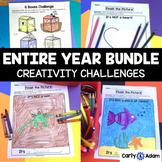
Creativity Activities and Challenges MEGA Bundle Finish the Picture, STEM

Guess Who Game Guess The Picture Math Games Digital Resources Back To School

Coding Unplugged: Pixel Puzzlers│Offline Coding for Beginners│Elementary Puzzles
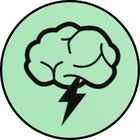
2D Shape Pattern Block STEM Challenge Cards

Christmas Would You Rather Questions to Print FREEBIE! Fun Holiday Activity!

- Easel Activity
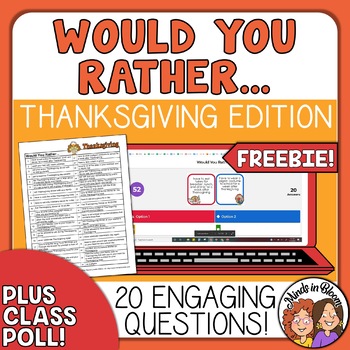
Thanksgiving Would You Rather Questions with Poll FREEBIE

FREE Perspective Taking Scenarios! Social Skills for Middle & High School

Executive Functioning Escape Room Activity
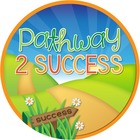
FREE Halloween Would You Rather Questions Print, Easel, and Google Slides
- Google Apps™
- Easel Assessment

Logic Puzzle FREEBIE
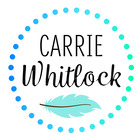
Making Inferences Role Play Activity

FREE! End of the Year: Teach the Teacher Day! {Now with Google Drive link}

Book vs. Movie Compare & Contrast FREEBIE! No-Prep Worksheets | Fun Movie Day!

STEM Activity Challenge Marshmallow Catapult 3rd-5th grade

St. Patrick's Day Would You Rather Questions
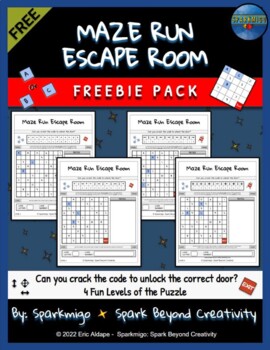
Maze Run Escape Room Logic Puzzle Game Challenge Activities Freebie Pack No Prep
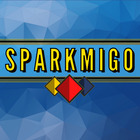
Brain Teasers & Logic Puzzles TRY FOR FREE

Farm Animal "Who am I?" Inferencing Riddles | Digital & Printable Pack

- Internet Activities

Presidents' Day Early Finisher Activities - Crack the Code | Word Search | Maze

ESCAPE THE MUMMY'S TOMB! MINI ESCAPE ROOM ACTIVITY

Free Analogies for Grades 3-6
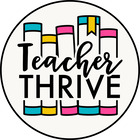
Crack the Codes - A Murder Mystery

FREE! Common Core Mathematical Practices Classroom Posters
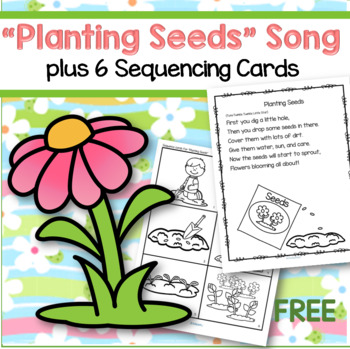
Planting Seeds Song and Sequencing Cards Activity Spring FREE

Thanksgiving Gratitude Worksheet FREEBIE - Print or Use with Digital Easel

Marshmallow Challenge Handout
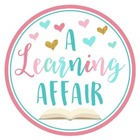
FREE Printable Mazes for Early Finishers Activities | 18 Mazes

FREE Growth Mindset Bell Ringer Warm-Up Daily Activities for 4th Grade and UP
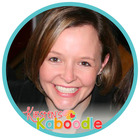
- We're hiring
- Help & FAQ
- Privacy policy
- Student privacy
- Terms of service
- Tell us what you think
JavaScript seems to be disabled in your browser. For the best experience on our site, be sure to turn on Javascript in your browser.
- Order Tracking
- Create an Account

200+ Award-Winning Educational Textbooks, Activity Books, & Printable eBooks!
- Compare Products
Reading, Writing, Math, Science, Social Studies
- Search by Book Series
- Algebra I & II Gr. 7-12+
- Algebra Magic Tricks Gr. 2-12+
- Algebra Word Problems Gr. 7-12+
- Balance Benders Gr. 2-12+
- Balance Math & More! Gr. 2-12+
- Basics of Critical Thinking Gr. 4-7
- Brain Stretchers Gr. 5-12+
- Building Thinking Skills Gr. Toddler-12+
- Building Writing Skills Gr. 3-7
- Bundles - Critical Thinking Gr. PreK-9
- Bundles - Language Arts Gr. K-8
- Bundles - Mathematics Gr. PreK-9
- Bundles - Multi-Subject Curriculum Gr. PreK-12+
- Bundles - Test Prep Gr. Toddler-12+
- Can You Find Me? Gr. PreK-1
- Complete the Picture Math Gr. 1-3
- Cornell Critical Thinking Tests Gr. 5-12+
- Cranium Crackers Gr. 3-12+
- Creative Problem Solving Gr. PreK-2
- Critical Thinking Activities to Improve Writing Gr. 4-12+
- Critical Thinking Coloring Gr. PreK-2
- Critical Thinking Detective Gr. 3-12+
- Critical Thinking Tests Gr. PreK-6
- Critical Thinking for Reading Comprehension Gr. 1-5
- Critical Thinking in United States History Gr. 6-12+
- CrossNumber Math Puzzles Gr. 4-10
- Crypt-O-Words Gr. 2-7
- Crypto Mind Benders Gr. 3-12+
- Daily Mind Builders Gr. 5-12+
- Dare to Compare Math Gr. 2-7
- Developing Critical Thinking through Science Gr. 1-8
- Dr. DooRiddles Gr. PreK-12+
- Dr. Funster's Gr. 2-12+
- Editor in Chief Gr. 2-12+
- Fun-Time Phonics! Gr. PreK-2
- Half 'n Half Animals Gr. K-4
- Hands-On Thinking Skills Gr. K-1
- Inference Jones Gr. 1-6
- James Madison Gr. 10-12+
- Jumbles Gr. 3-5
- Language Mechanic Gr. 4-7
- Language Smarts Gr. 1-4
- Mastering Logic & Math Problem Solving Gr. 6-9
- Math Analogies Gr. K-9
- Math Detective Gr. 3-8
- Math Games Gr. 3-8
- Math Mind Benders Gr. 5-12+
- Math Ties Gr. 4-8
- Math Word Problems Gr. 4-10
- Mathematical Reasoning Gr. Toddler-11
- Middle School Science Gr. 6-8
- Mind Benders Gr. PreK-12+
- Mind Building Math Gr. K-1
- Mind Building Reading Gr. K-1
- Novel Thinking Gr. 3-6
- OLSAT® Test Prep Gr. PreK-K
- Organizing Thinking Gr. 2-8
- Pattern Explorer Gr. 3-9
- Practical Critical Thinking Gr. 8-12+
- Punctuation Puzzler Gr. 3-8
- Reading Detective Gr. 3-12+
- Red Herring Mysteries Gr. 4-12+
- Red Herrings Science Mysteries Gr. 4-9
- Science Detective Gr. 3-6
- Science Mind Benders Gr. PreK-3
- Science Vocabulary Crossword Puzzles Gr. 4-6
- Sciencewise Gr. 4-12+
- Scratch Your Brain Gr. 2-12+
- Sentence Diagramming Gr. 3-12+
- Smarty Pants Puzzles Gr. 3-12+
- Snailopolis Gr. K-4
- Something's Fishy at Lake Iwannafisha Gr. 5-9
- Teaching Technology Gr. 3-12+
- Tell Me a Story Gr. PreK-1
- Think Analogies Gr. 3-12+
- Think and Write Gr. 3-8
- Think-A-Grams Gr. 4-12+
- Thinking About Time Gr. 3-6
- Thinking Connections Gr. 4-12+
- Thinking Directionally Gr. 2-6
- Thinking Skills & Key Concepts Gr. PreK-2
- Thinking Skills for Tests Gr. PreK-5
- U.S. History Detective Gr. 8-12+
- Understanding Fractions Gr. 2-6
- Visual Perceptual Skill Building Gr. PreK-3
- Vocabulary Riddles Gr. 4-8
- Vocabulary Smarts Gr. 2-5
- Vocabulary Virtuoso Gr. 2-12+
- What Would You Do? Gr. 2-12+
- Who Is This Kid? Colleges Want to Know! Gr. 9-12+
- Word Explorer Gr. 6-8
- Word Roots Gr. 3-12+
- World History Detective Gr. 6-12+
- Writing Detective Gr. 3-6
- You Decide! Gr. 6-12+

- Special of the Month
- Sign Up for our Best Offers
- Bundles = Greatest Savings!
- Sign Up for Free Puzzles
- Sign Up for Free Activities
- Toddler (Ages 0-3)
- PreK (Ages 3-5)
- Kindergarten (Ages 5-6)
- 1st Grade (Ages 6-7)
- 2nd Grade (Ages 7-8)
- 3rd Grade (Ages 8-9)
- 4th Grade (Ages 9-10)
- 5th Grade (Ages 10-11)
- 6th Grade (Ages 11-12)
- 7th Grade (Ages 12-13)
- 8th Grade (Ages 13-14)
- 9th Grade (Ages 14-15)
- 10th Grade (Ages 15-16)
- 11th Grade (Ages 16-17)
- 12th Grade (Ages 17-18)
- 12th+ Grade (Ages 18+)
- Test Prep Directory
- Test Prep Bundles
- Test Prep Guides
- Preschool Academics
- Store Locator
- Submit Feedback/Request
- Sales Alerts Sign-Up
- Technical Support
- Mission & History
- Articles & Advice
- Testimonials
- Our Guarantee
- New Products
- Free Activities
- Libros en Español
Customers love our products...
Tell us your story ».
"My children love Balance Benders™; in fact, I would not be exaggerating if I said they were addicted to them. I sincerely thank you for a product that makes what can be extremely difficult skills to master an absolute blast for my children."
"The wealth of game-like activities and colorful illustrations in Fun-Time Phonics!™ make it feel like play rather than work, allowing kids to enjoy themselves while acquiring the skills and confidence that lead to fluency."
"Reading Detective® is the best reading comprehension teaching material I have found! I love that your material teaches the student HOW to comprehend, and how to look for the answers in the text. I love your evidence-seeking approach!"
"I love the Language Smarts™ curriculum. My son enjoys it very much and can follow the simple instructions with ease. Thanks to The Critical Thinking Co.™, my son scores high on his standardized and placement tests."
"U.S. History Detective® is fabulous. You have to do more than just figure out the correct answer -- you have to give the sentence number(s) that best supports your answer. I love that. You have to read the text and support your conclusions."
"The fun thing about Mathematical Reasoning™ is that every page is a little different. No rote facts or boredom here! Mix that in with a few game-like activities and lots of colors and pictures, and they had my kiddo hooked."
"We did an experiment to see if Building Thinking Skills® would help students perform better on standardized and state tests. The improvement was remarkable. Test scores went up even after the first few months!"
"Word Roots is everything I was searching for and more. It goes beyond spelling tests and teaches students to decipher words based upon prefixes, suffixes, and roots. The focus is on meaning, which in turn increases comprehension."
"You wouldn't think something so fun could have such a profound effect on your thought process! Mind Benders® sharpen organizational and informational processing skills as well as strengthen reading skills."


- Math for Kids
- Parenting Resources
- ELA for Kids
- Teaching Resources

How to Teach Number Formation in 5 Easy Steps
13 Best Resources for Math Videos for Kids: Math Made Fun
How to Teach Skip Counting to Kids in 9 Easy Steps
10 Best Math Intervention Strategies for Struggling Students
How to Teach Division to Kids in 11 Easy Steps
How to Cope With Test Anxiety in 12 Easy Ways
Developmental Milestones for 4 Year Olds: The Ultimate Guide
Simple & Stress-Free After School Schedule for Kids of All Ages
When Do Kids Start Preschool: Age & Readiness Skills
Kindergarten Readiness Checklist: A Guide for Parents
How to Teach Letter Formtaion to Kids in 9 Easy Steps
15 Best Literacy Activities for Preschoolers in 2024
12 Best Poems About Teachers Who Change Lives
6 Effective Ways to Improve Writing Skills
40 Four Letter Words That Start With A
60 Fun Animal Facts for Kids
12 Best Behavior Management Techniques for the Classroom
13 Best Online Teaching Tips for Teachers
How to Teach Kids to Write in 9 Easy Steps
13 Challenges for Teachers and How to Address Them

21 Best Vocabulary Activities for Kids: Word Wizards
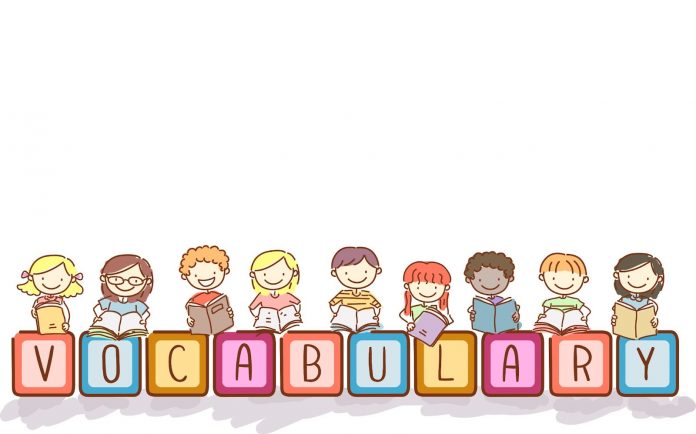

4 Engaging Learning Vocabulary Activities
4 reading and word exposure activities, 4 vocabulary building through play, 9 real-life experiences and creative expression.
Words are the building blocks of communication. They allow us to express our thoughts, emotions, and ideas, and they play a pivotal role in shaping our understanding of the world around us. Engaging in vocabulary activities is a dynamic way to enhance this learning process. For children, a strong vocabulary isn’t just about knowing many words; it’s about understanding their meanings and using them effectively in various contexts.
SplashLearn: Most Comprehensive Learning Program for PreK-5

SplashLearn inspires lifelong curiosity with its game-based PreK-5 learning program loved by over 40 million children. With over 4,000 fun games and activities, it’s the perfect balance of learning and play for your little one.
According to a study shared by GPB , building a child’s vocabulary as early as possible is crucial for several reasons:
- Build Retention: Children who learn advanced vocabulary early on are more likely to retain and use these words throughout their lives. The roots of words, when taught at a young age, become an integral part of their everyday vernacular.
- Every Day, Everywhere: A robust vocabulary prepares children for life. These words are not just for tests; they appear in movies , video games , schools, and workplaces. A rich vocabulary helps children communicate effectively in diverse settings, boosting their confidence .
- Impress for Success: A good vocabulary is a tool for success. It allows children to make lasting impressions in various situations, from school presentations to job interviews in the future.
In this blog, we’ll explore some fun and engaging vocabulary activities to enhance your child’s vocabulary. These activities are designed to make word-learning an enjoyable experience, ensuring that your child not only learns new words but also retains and uses them effectively.
21 Fun and Engaging Vocabulary Activities for Kids
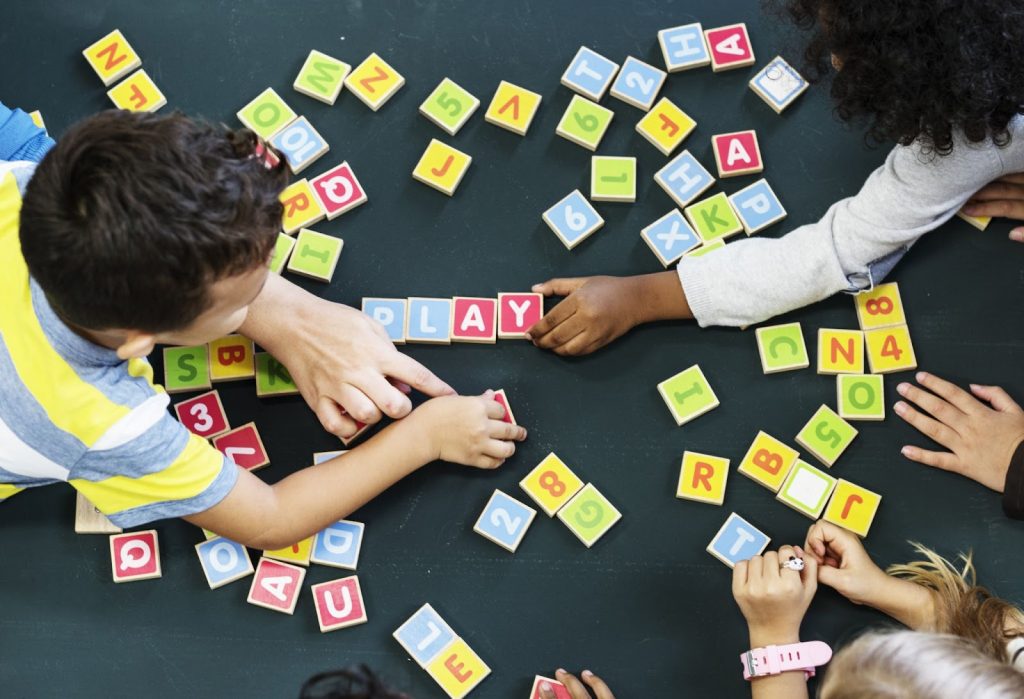
Here is a list of exciting vocabulary development activities for kids that are tried-and-tested methods that can help children expand their word banks while enjoying the learning process:
1. Vocabulary Worksheets

Vocabulary worksheets are a dynamic and effective tool for enhancing children’s language skills. These sheets, filled with activities like word matching , sentence completion , and synonyms-antonyms exercises , not only introduce new words but also deepen understanding through context and usage. They are excellent for reinforcing learning, improving spelling, and expanding a child’s verbal arsenal, making them more confident and articulate in their language use.
2. Crossword Puzzles
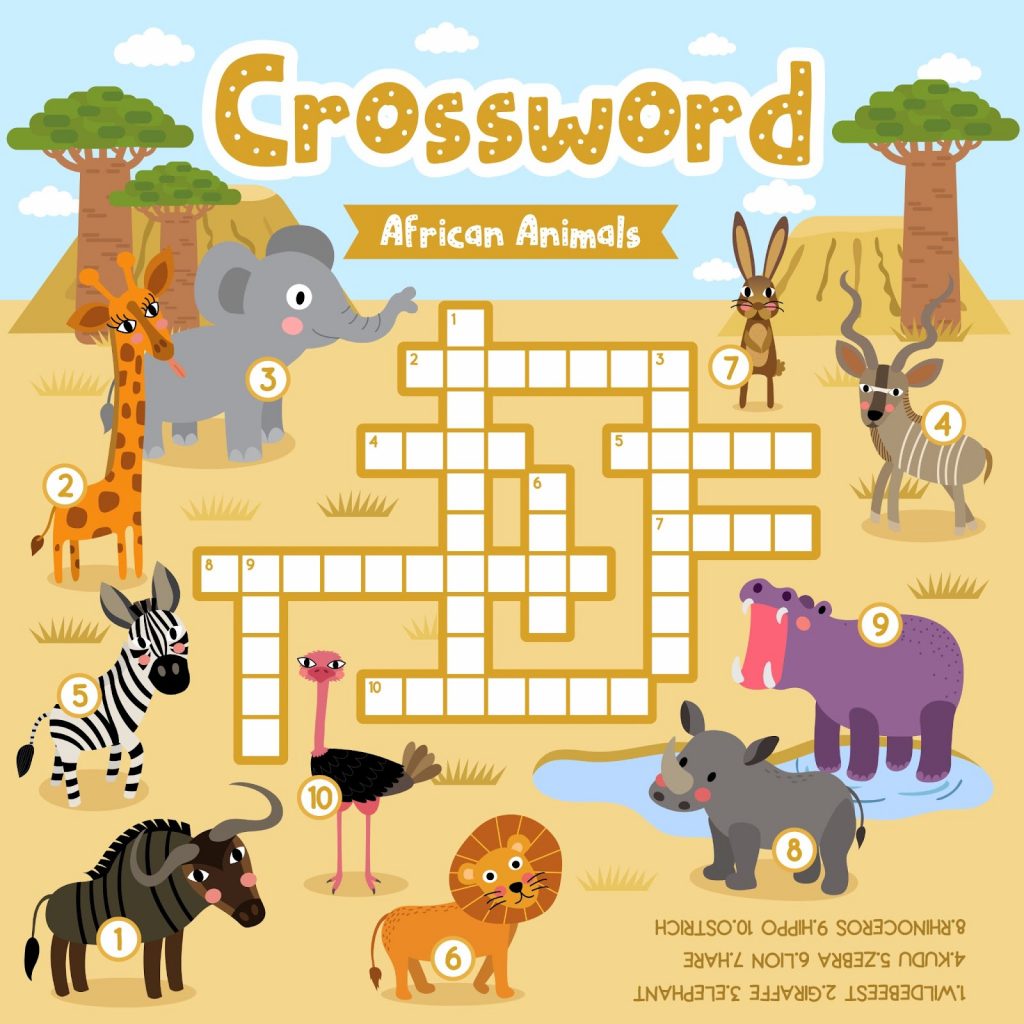
Crossword puzzles are not only entertaining but also effective in enhancing vocabulary and critical thinking skills. By solving clues to fill in the blanks, learners are exposed to new words and are challenged to recall words they already know.
Recommendations: For younger kids, start with simple crosswords with picture clues. As they advance, introduce them to more challenging puzzles .
3. Flashcards
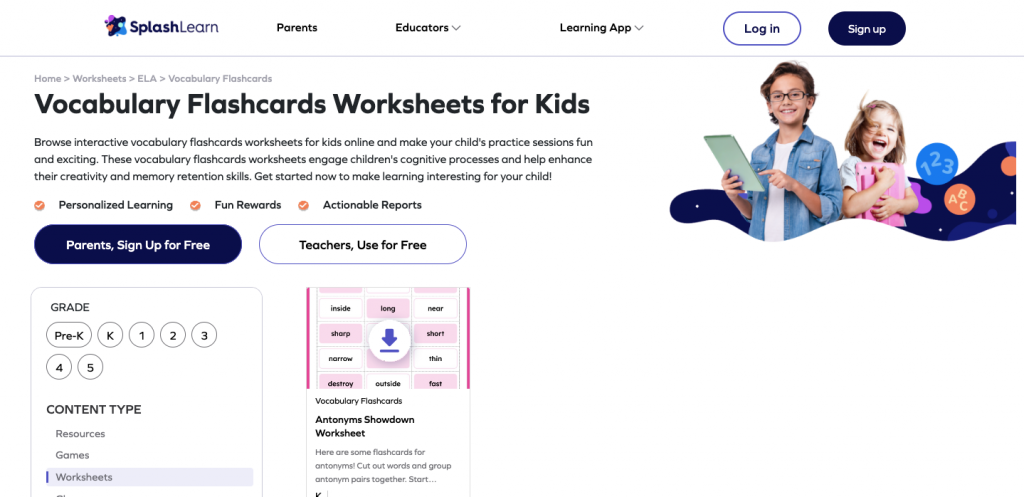
Flashcards are a time-tested method for vocabulary enhancement. They allow learners to repeatedly review and test their knowledge of words and their meanings, promoting retention and recall.
- Create two-sided cards with the word on one side and its definition, a sentence, or a synonym on the other.
- Make the learning process interactive by incorporating images or colors.
4. Word Search Puzzles

Word search puzzles involve finding hidden words within a grid of letters. These puzzles help improve word recognition, spelling, and pattern recognition.
- Start with smaller grids for younger kids and gradually increase the complexity.
- Create custom word search puzzles based on themes or topics of interest using online tools.
5. Read Aloud Sessions

Reading aloud to children is one of the most effective vocabulary building activities. It not only introduces them to new words but also helps in improving their pronunciation, comprehension, and listening skills. When children hear words being used in context, they can better grasp their meanings and nuances.
Suggestions: Parents can make read-aloud sessions more engaging by choosing a variety of books – from fairy tales and adventure stories to informative non-fiction . It’s essential to pick age-appropriate books and occasionally pause to discuss unfamiliar words. Asking open-ended questions about the story can also encourage kids to think critically and use new vocabulary in their responses.
6. Word of the Day
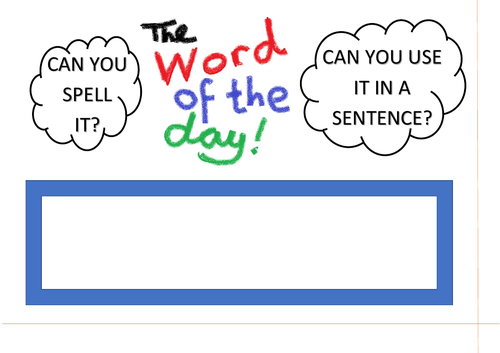
The “Word of the Day” is a simple yet effective vocabulary activity. It involves introducing children to a new word every day, helping them understand its meaning, pronunciation, and usage.
Tips: Parents can integrate the “Word of the Day” into daily routines by:
- Writing the word on a whiteboard or sticky note and placing it in a visible area.
- Encouraging kids to use the word in sentences throughout the day.
- Associating the word with fun activities or games to reinforce its meaning.
7. Storytelling
Storytelling is a powerful tool if you are looking for activities on vocabulary for kids. When children listen to or create stories, they encounter a plethora of new words in a meaningful context.
Encourage kids to craft their own tales. Provide them with a theme or a set of words to incorporate into their story. This not only boosts their vocabulary but also sparks their creativity. Parents can also share folktales or family anecdotes, pausing to explain any complex words or phrases.
8. Scrabble or Word Games
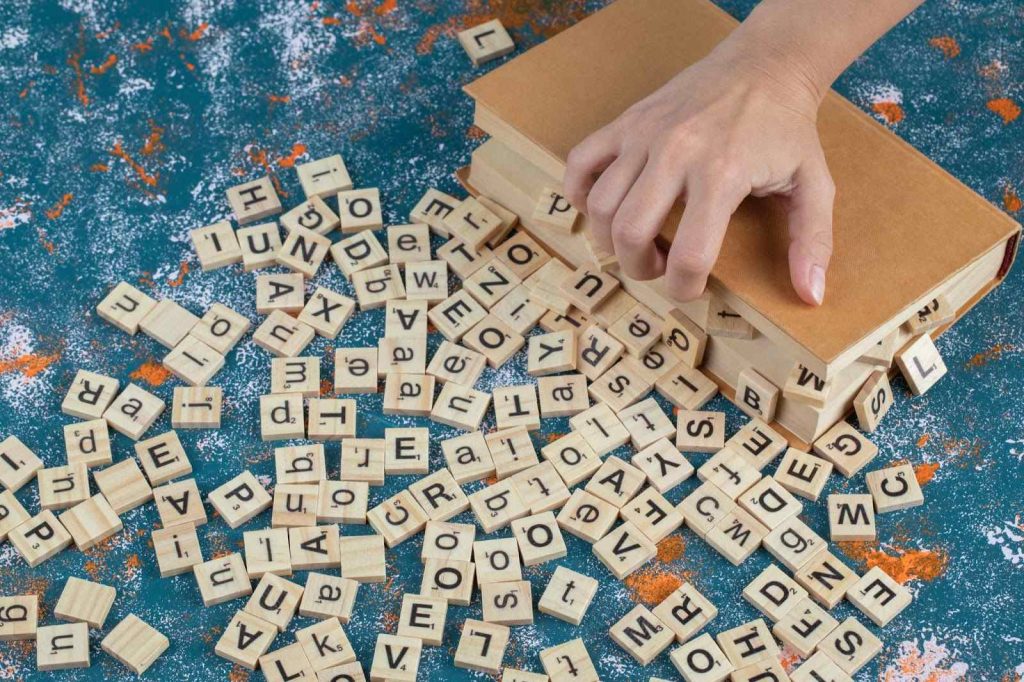
Board games , especially ones like Scrabble, are fun vocabulary activities that can significantly enhance a child’s word bank. These games challenge kids to think of different words and combinations, promoting strategic thinking alongside vocabulary enhancement .
Recommendations: Apart from Scrabble, other age-appropriate word games include ‘Boggle’, ‘BananaGrams’, and ‘Word-A-Melon’. These games are not only educational but also offer a fun way for the entire family to bond while learning.
9. Pictionary
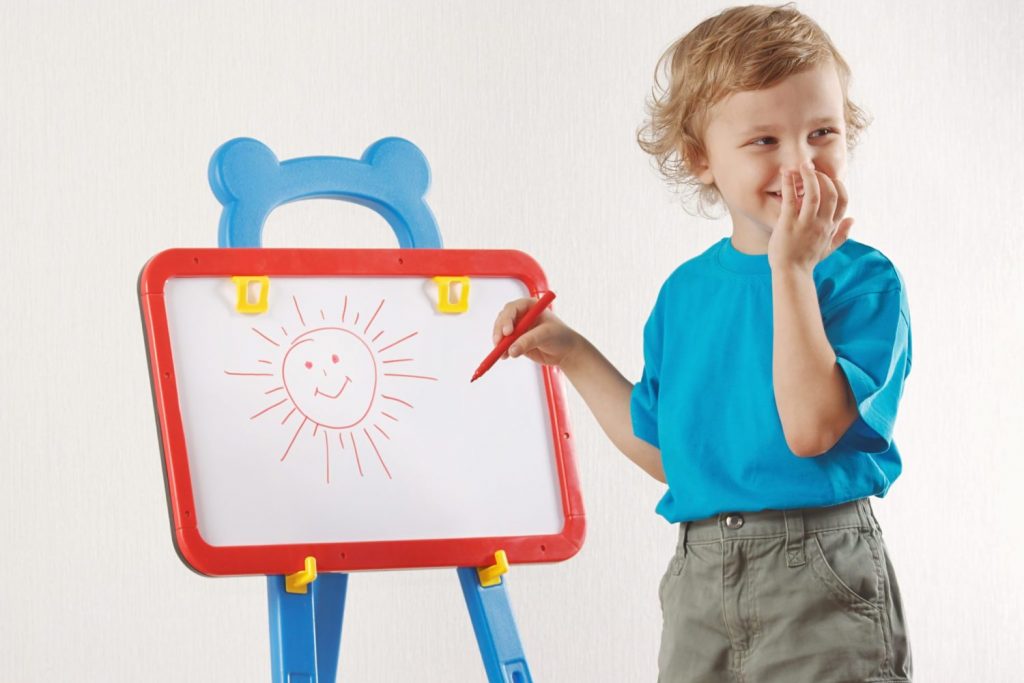
Pictionary is one of the most engaging activities to teach vocabulary. It requires players to draw a word without using letters or verbal hints, which enhances word recognition and stimulates creativity. By visualizing and drawing out words, children can form stronger associations and recall them more easily.
Tips to organize Pictionary sessions:
- Create a set of cards with vocabulary words suitable for the age group.
- Divide participants into teams and take turns drawing while others guess.
- For younger kids, use simple words and gradually introduce more complex terms as they become more confident.
10. Bingo with a Twist
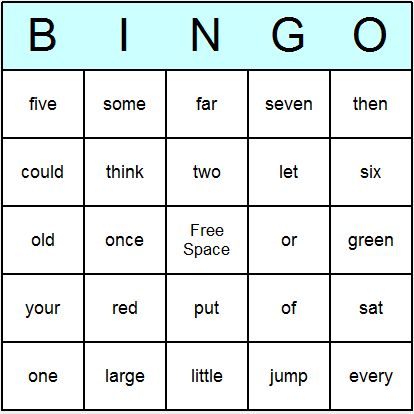
Transforming the classic Bingo game into a vocab activity can make vocabulary learning more engaging. Instead of numbers , use words on the Bingo cards. As the words are called out, participants mark them off their cards.
Examples: A Bingo card for younger children might include words like “apple,” “tree,” “book,” while for older kids, it could have words like “ metaphor ,” “equator,” or “constitution.”
11. Word Building Blocks
Building blocks are not just for constructing towers or bridges. They can also be used as a tactile method for kids to form words, enhancing their spelling and vocabulary skills.
Recommendations: Sets like “See and Spell” or “Alphabet Building Blocks” are specifically designed for vocab activities, allowing children to physically piece together letters to form words.
12. Word Charades
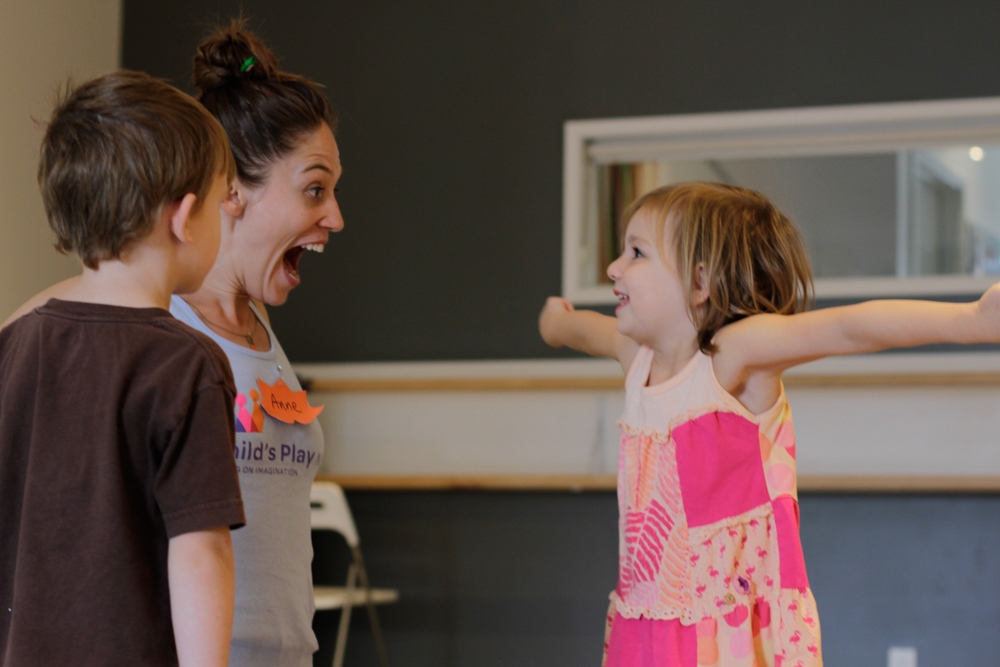
Word Charades is similar to the traditional game of charades but focuses solely on vocabulary words. Players act out a word without speaking, relying on gestures and expressions, making it one of the most interactive vocabulary practice activities.
Ideas for Prompts: Depending on the age group, word charade prompts can range from “butterfly” or “jump” for younger kids to “astronaut” or “reflection” for older ones.
13. Museum Visits
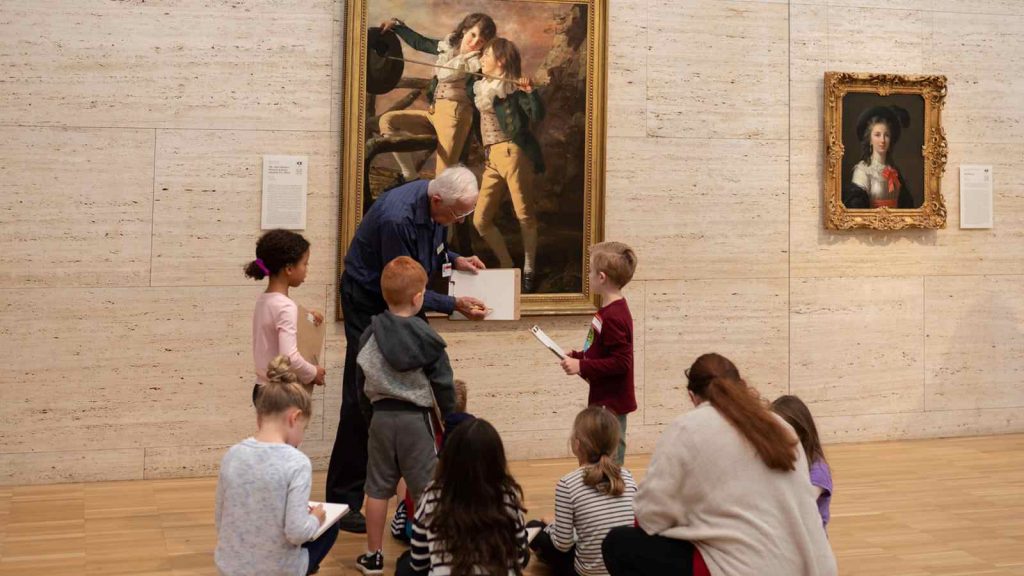
Museums are more than just buildings filled with artifacts; they’re immersive environments where every exhibit tells a story. Each display introduces children to a world of new terms, from historical events and figures to scientific concepts and artistic techniques. Engaging in such vocabulary builder activities allows children to contextualize words, making them easier to remember.
Recommendations: Before visiting, research the museum’s exhibits and prepare a list of words or concepts you expect to encounter. During the visit, encourage kids to read exhibit descriptions aloud, ask curators questions, and later discuss their favorite exhibits and the new terms they’ve learned.
14. Library Visits and Book Scavenger Hunt

Libraries, with their vast collections of books, are perfect places if you are looking for fun vocabulary words activities. A book scavenger hunt adds an element of excitement. Children not only discover new books but also encounter a plethora of new words.
Tips: Design clues that guide kids towards specific genres, authors, or themes. After the hunt, discuss the books they’ve chosen, focusing on interesting words or phrases they found intriguing.
15. Newspaper or Magazine Reading
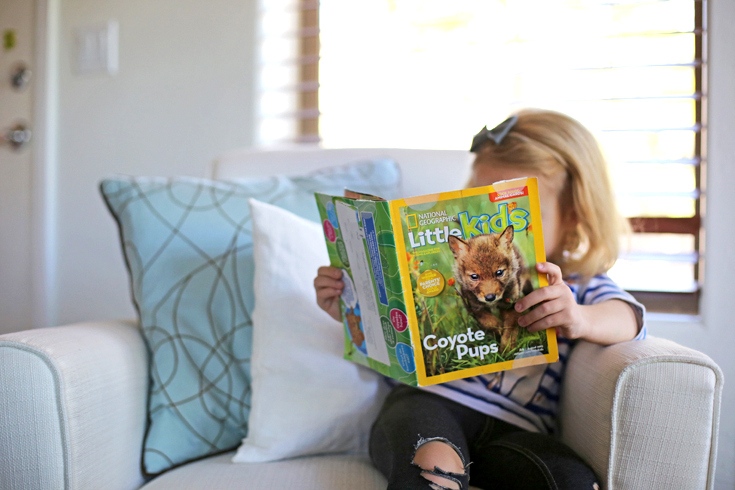
Newspapers and magazines cover a wide range of topics, from global events to local news, arts, science, and more. Regular reading exposes children to diverse vocabulary in context.
Recommendations: Dedicate a weekly session to discuss interesting articles. Highlight challenging words, explore their meanings, and encourage kids to use them in sentences.
16. Cooking Together with a Recipe Challenge

Cooking is a hands-on activity that introduces children to a world of flavors and the vocabulary that describes them. From ingredients to cooking techniques, every recipe is a lesson in language.
Tips: Once a week, challenge kids to try a new recipe. Discuss unfamiliar terms, and as they cook, ask them to describe the textures, flavors, and processes, expanding their culinary vocabulary.
17. Grocery Shopping and Word Search

Discussion: Grocery stores are filled with a variety of products, each with its name, ingredients, and origin. Turning shopping into a vocabulary development activity can make it both educational and fun.
Recommendations: Prepare a list with descriptions instead of direct product names. For instance, “Find something that’s sweet, red, and crunchy.” After shopping, discuss the items, their origins, and any unfamiliar terms on the packaging.
18. Vocabulary Journal with Everyday Words
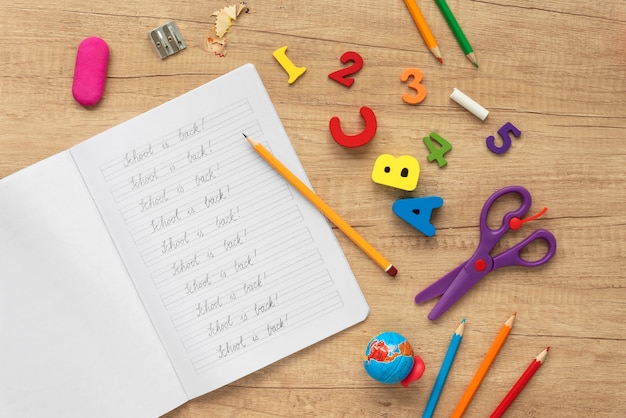
A vocabulary journal is a dedicated space for children to document their linguistic journey. By noting down and revisiting new words, they reinforce their learning.
Tips: Encourage daily entries. Apart from writing the word and its meaning, ask them to draft a short story or poem using the new terms, enhancing both vocabulary and creativity.
19. Word Wall in the Home or Classroom
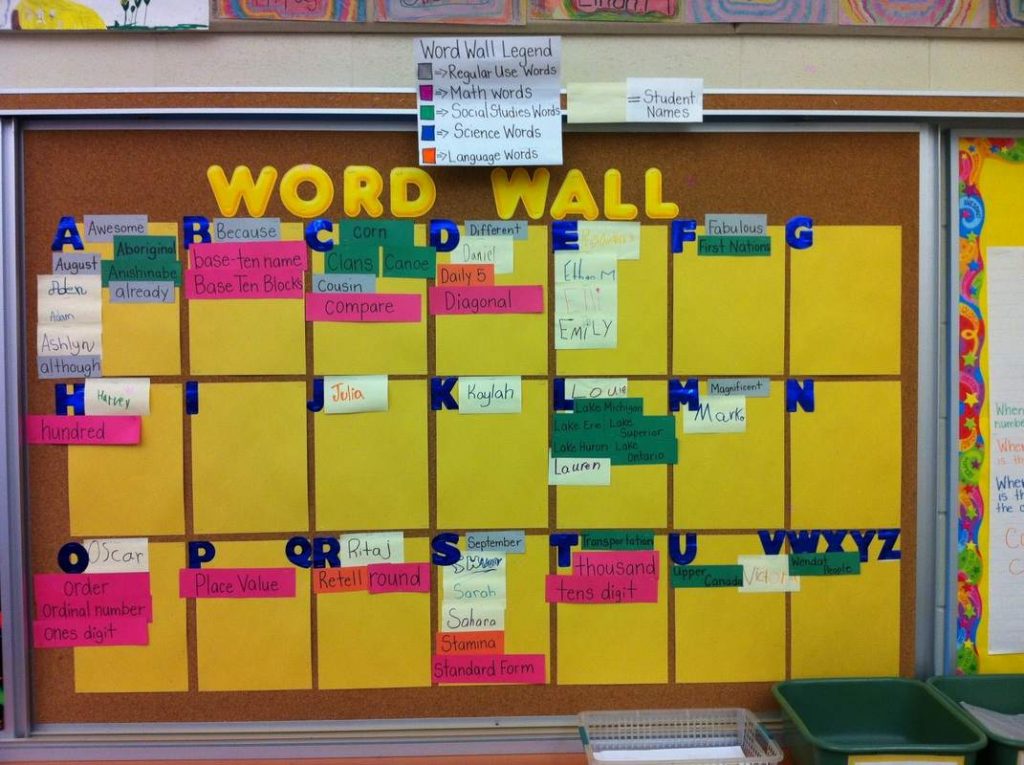
A word wall is a dynamic display that grows with a child’s vocabulary. It serves as a daily reminder of words learned and a quick reference.
Recommendations: Dedicate a space where kids can add new words, categorize them by themes, or even associate them with images or drawings. Review and discuss the wall periodically, celebrating milestones and introducing challenges.
20. Riddle of the Day
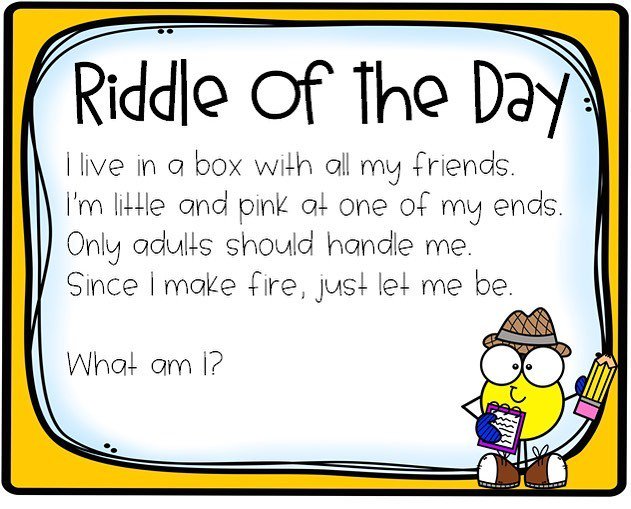
Riddles stimulate critical thinking and often introduce children to multiple meanings of words. They’re fun puzzles that challenge kids to think beyond the obvious.
Tips: Start the day with a riddle. Discuss the answer, focusing on the vocabulary used. Encourage children to craft their own riddles, enhancing both their creativity and word knowledge.
21. Story Writing and Vocabulary Expansions

Writing is a powerful tool for vocabulary enhancement. When children craft stories, they dive deep into their vocabulary reservoir, using words in varied contexts.
Recommendations: Provide weekly writing prompts . After they’ve written their stories, review them together, highlighting excellent vocabulary usage and introducing synonyms or more complex terms they could incorporate in future writings .
The journey of vocabulary enhancement is not limited to structured lessons or specific tools. Real-life experiences and creative expressions offer a plethora of opportunities for children to immerse themselves in a world of words. As highlighted by PLD Literacy , strong vocabulary and oral language skills lay the foundation for literacy and overall academic success . These skills not only foster a child’s confidence but also impact their relationships, sense of self, and even their mental well-being.
By engaging in diverse vocabulary activities, we not only prepare our children for academic challenges but also equip them with the linguistic tools to navigate the world confidently. Remember, it’s not just about the quantity of words a child knows; the quality of their understanding and their ability to use them in context is what truly matters. So, whether it’s a visit to the museum, a cooking session, or a simple game of Pictionary, every moment can be a vocabulary-building opportunity. Embrace these vocabulary activities and watch your child’s linguistic world expand.
Frequently Asked Questions (FAQs)
Can real-life experiences genuinely enhance vocabulary in kids.
Absolutely! Real-life experiences provide contextual learning, making word retention more effective. Activities like museum visits or grocery shopping introduce children to diverse terms in meaningful settings.
Are digital vocabulary activities as effective as traditional methods?
Both digital and traditional methods have their merits. Digital activities offer interactive and engaging platforms, while traditional methods provide tactile and personal experiences. A balanced approach is ideal.
How can parents integrate vocabulary activities into daily routines?
Parents can weave vocabulary activities into everyday tasks like cooking, reading bedtime stories , or discussing daily events. Simple practices like introducing a “Word of the Day” or discussing newspaper articles can be effective.
Are vocabulary games just for fun, or do they offer genuine learning?
While vocabulary games are entertaining, they also offer genuine learning. Games like Scrabble or Pictionary challenge kids to think critically, recognize patterns, and use words in varied contexts, enhancing both vocabulary and cognitive skills.
12 Best Activities for Kinesthetic Learners
15 best speech therapy activities for toddlers.
15 Best STEM Activities for Preschoolers

Most Popular

15 Best Report Card Comments Samples

117 Best Riddles for Kids (With Answers)
40 best good vibes quotes to brighten your day, recent posts.

10 Best Online Homeschool Programs

Math & ELA | PreK To Grade 5
Kids see fun., you see real learning outcomes..
Watch your kids fall in love with math & reading through our scientifically designed curriculum.
Parents, try for free Teachers, use for free

- Games for Kids
- Worksheets for Kids
- Math Worksheets
- ELA Worksheets
- Math Vocabulary
- Number Games
- Addition Games
- Subtraction Games
- Multiplication Games
- Division Games
- Addition Worksheets
- Subtraction Worksheets
- Multiplication Worksheets
- Division Worksheets
- Times Tables Worksheets
- Reading Games
- Writing Games
- Phonics Games
- Sight Words Games
- Letter Tracing Games
- Reading Worksheets
- Writing Worksheets
- Phonics Worksheets
- Sight Words Worksheets
- Letter Tracing Worksheets
- Prime Number
- Order of Operations
- Long multiplication
- Place value
- Parallelogram
- SplashLearn Success Stories
- SplashLearn Apps
- [email protected]
© Copyright - SplashLearn

Make study-time fun with 14,000+ games & activities, 450+ lesson plans, and more—free forever.
Parents, Try for Free Teachers, Use for Free
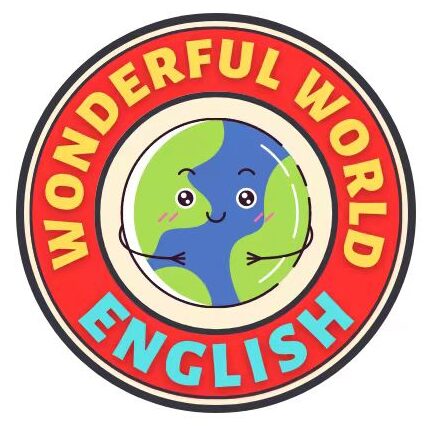
Fun Vocabulary Activities: 10 Ways to Boost Word Skills

Meet David De’ Ath , founder, editor, and writer at Wonderful World English. With his extensive background as an English teacher, David provides valuable insights and practical tips on ESL for students and teachers alike.
Engaging students in the development of their vocabulary can be a challenging endeavor.
Traditional methods like memorization may not always resonate with every learner.
However, by integrating fun vocabulary activities into the learning process, educators can enhance students’ engagement and help them make meaningful connections with the words they’re learning.
Activities that are both enjoyable and educational can transform vocabulary learning from a tedious task into an exciting adventure that students look forward to.
To effectively expand a student’s lexicon, an array of activities that cater to different learning styles can be employed.
Vocabulary games, interactive strategies, and creative learning tools introduce new words and reinforce their meanings and usage in various contexts.
The goal of these activities is not just to broaden students’ word banks but also to deepen their understanding and ability to apply vocabulary in real-life situations.
Through the deliberate use of these methods, vocabulary acquisition becomes a dynamic aspect of everyday classroom activities, promoting better communication skills across all subject areas.
Key Takeaways
- Variety in vocabulary activities boosts engagement and understanding.
- Games and interactive strategies support diverse learning styles.
- Continuous application of vocabulary enhances real-world communication skills.
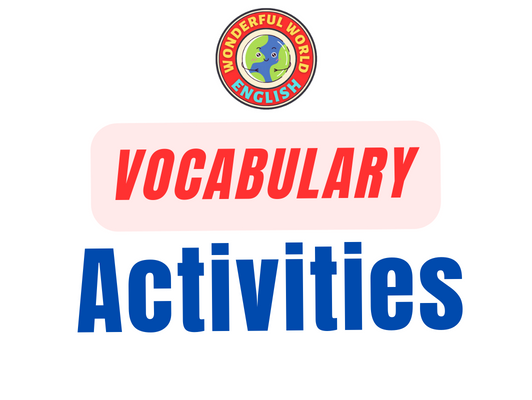
Foundations of Vocabulary Activities
Students’ success in developing vocabulary skills hinges on systematic instruction and engaging activities.
This section explores the foundations that are integral for learning and boosting student confidence in vocabulary mastery.
Understanding Vocabulary Instruction
Vocabulary instruction goes beyond mere memorization of word meanings.
Effective vocabulary teaching involves strategies that encourage deep understanding and usage of words in various contexts.
Such instruction offers students the essential tools to interpret and convey nuanced meanings, leading to more precise and powerful communication.
Activities are designed to expand a student’s lexicon and enhance their ability to apply vocabulary knowledge practically.
Educators must select activities that facilitate repeated exposure to new words across different settings.
This reinforces word learning and helps integrate new vocabulary into a student’s active language repertoire.
For example, having students use new words in original short stories or discussions can solidify their understanding and retention.
For some insights into how to teach vocabulary to students, the guide below has you covered!
Related: How to Teach Vocabulary to ESL Students: Teacher’s Guide
Key Principles of Engaging Vocabulary Activities
When curating vocabulary activities, engagement, and interactivity are key principles.
Activities that encourage active participation will lead to higher levels of student engagement and, ultimately, greater learning outcomes.
- Involved in collaborative tasks that require communication and peer interaction.
- Challenged with creative and context-rich exercises like writing prompts or role-playing scenarios.
- Provide immediate positive feedback to affirm correct usage.
- Offer varying levels of difficulty to cater to diverse learning abilities.
Educators must thread these principles into the fabric of their vocabulary teaching methodologies to create an environment where students thrive.
Engaging vocabulary activities are potent tools that teach students new words and empower them with the confidence to use their expanding vocabularies effectively.
The goal is to transform passive learners into active users of language, enabling them to articulate their thoughts and ideas with clarity and precision.
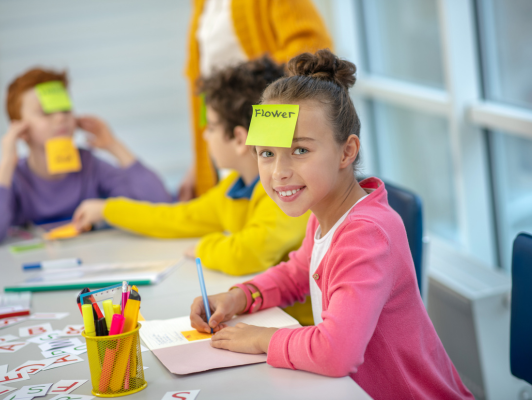
Effective Vocabulary Games and Activities
Educators often integrate games that make the learning process dynamic and engaging to enhance students’ word mastery.
These activities enrich students’ vocabularies and sharpen their recall and application skills in a lively, interactive setting.
Vocabulary Bingo and Jeopardy
Vocabulary Bingo melds the thrill of competition with learning.
Students mark their bingo cards with the correct vocabulary words as definitions or synonyms are called out.
This game enforces not only word recognition but also comprehension.
Adapted from a traditional format, Vocabulary Bingo can be tailored to suit any grade level vocabulary list.
In a similar vein, Vocabulary Jeopardy challenges students to apply their knowledge in a game-show-style format.
Categories can range from word definitions to usage in context, broadening students’ understanding and retention.
Classroom Pictionary and Charades
Transforming vocabulary review into an artful activity, Classroom Pictionary has students illustrate vocabulary words, promoting a deeper connection between the word and its meaning.
As they draw, fellow pupils wager on the intended word, intertwining learning with creativity.
This visual approach often suits visual learners and adds an element of fun to the learning process.
Vocabulary Charades takes a kinetic approach by having students act out words for their classmates to guess.
This activity is especially beneficial for kinesthetic learners and helps anchor word meanings with physicality, making vocabulary recall more instinctive.
Roll-a-Word and Vocabulary Relay
With Roll-a-Word , students cast dice to engage with vocabulary in various ways—defining it, using it in a sentence, or identifying synonyms or antonyms.
This randomness injects an element of surprise into vocabulary practice, ensuring that students remain attentive and invested in the activity.
Vocabulary Relay brings movement into the learning process.
Students race to a board to write sentences incorporating a vocabulary word, fostering quick thinking and teamwork.
The competitive element encourages speed and accuracy, and physical activity aids in memory retention.
Check out the guide below for our list of some of the BEST classroom games to play!
Related: Fun Classroom Games: Engage and Educate with These Ideas

Creative Vocabulary Learning Tools
In today’s classrooms, educators emphasize the importance of enhancing vocabulary through interactive and visual methods.
These tools enrich the students’ understanding of new words and encourage creativity and critical thinking.
Word Walls and Word Maps
Word Walls and Word Maps transform passive learning into an active exploration of language.
A Word Wall is a visual collection of words displayed on a classroom wall, categorically or alphabetically, to enhance a student’s vocabulary knowledge.
Students absorb words and their meanings subconsciously by frequently interacting with the Word Wall.
Word Maps , on the other hand, visually depict the relationship between a word and its features like antonyms, synonyms, and sentences, further cementing its usage and context.
Semantic Maps and Graphic Organizers
Semantic Maps and Graphic Organizers are pivotal in organizing thoughts and relationships between words.
Semantic maps graphically represent the meanings and relations of words, allowing students to see connections and hierarchies.
This encourages deeper understanding as students link words to concepts and categories.
Graphic organizers can vary in complexity, from simple Venn diagrams to intricate flowcharts, which serve to visually represent ideas and definitions, guiding students through the process of integrating new vocabulary into their existing knowledge base.
Frayer Model and Crossword Puzzles
The Frayer Model is a type of graphic organizer tailored for vocabulary acquisition.
It typically consists of a square divided into four sections, where students note a word’s definition, characteristics, examples, and non-examples.
This structured approach aids in comprehensive understanding and retention of words.
Crossword Puzzles blend the challenge of problem-solving with vocabulary practice.
As students fill in the blanks with correct words based on clues provided, they engage in critical thinking and apply their knowledge of sentence formation and word meanings.
Crosswords not only reinforce vocabulary but also make the learning process enjoyable.
Crosswords are just one of many excellent games for learning English.
For a complete guide of the BEST games to learn English, check out the link below!
Related: Best Games to Learn English: Ultimate Guide

Interactive Vocabulary Instruction Strategies
Engaging students effectively in vocabulary learning can be a key factor in language acquisition and comprehension.
These interactive strategies reinforce word knowledge and enhance retention through playful and focused activities.
Tic-Tac-Toe and Concentration Games
Tic-Tac-Toe can be adapted for vocabulary instruction by requiring students to define or correctly use a vocabulary word in order to place their X or O on the game grid.
This method turns a simple game into a powerful tool for reinforcing word meanings and usage.
A classic game of Concentration , also known as Memory, can be played using pairs of vocabulary words and their definitions.
Students flip cards over, trying to find matching pairs, which promotes memorization and recall of vocabulary terms.
Vocabulary Hangman and Word Search
Vocabulary Hangman encourages students to remember the spelling and meaning of words through a process of elimination and strategic guessing.
In a classroom setting, this classic game can be played with a focus on new vocabulary, providing an entertaining way to reinforce word learning.
Similarly, Word Search puzzles serve as a fun way for students to become familiar with the appearance and spelling of new vocabulary.
They must sift through a grid of letters, finding terms from their vocabulary list that can improve their ability to recognize these words in other contexts.
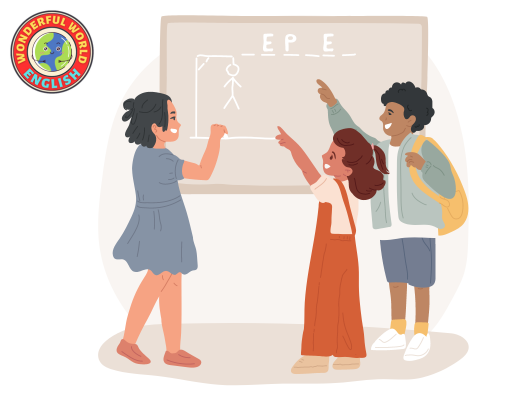
Assessing Vocabulary Progress
Educators implement systematic assessments that measure a student’s command of academic language to ensure effective vocabulary growth.
These assessments not only gauge retention but also help in forming strategies to enhance word comprehension and usage.
Vocabulary Quizzes and Tests
Vocabulary quizzes and tests serve as traditional tools to assess a student’s grasp of vocabulary words .
They may come in various forms, including:
- Multiple-choice questions, where students choose the correct definition or usage of a word.
- Fill in the blanks, encouraging students to select the appropriate vocabulary word to complete a sentence.
Such assessments can highlight the direct relationship between the student’s comprehension of vocabulary and their overall communication skills .
Performance-Based Assessments
Performance-based assessments move beyond written tests to evaluate a student’s practical application of academic vocabulary .
Examples of these might include:
- Students engage in role-plays or debates using specific vocabulary words, which shows the integration of language into communication skills .
- Creating presentations or writing essays that make use of academic and content-specific terms to demonstrate comprehension and success in language mastery.
These methods emphasize the dynamic use of vocabulary as part of expressive language skills, presenting a more holistic view of student assessment .
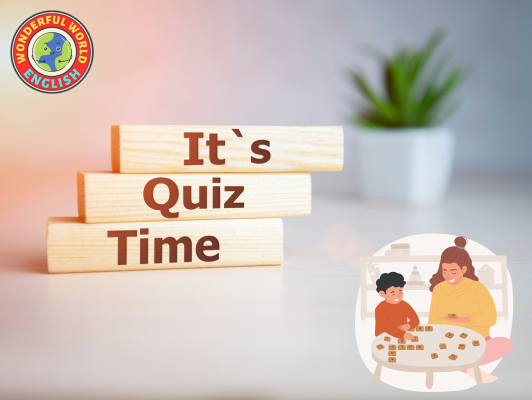
Integrating fun and interactive activities into vocabulary learning transforms it from a mundane task to an engaging adventure, significantly enhancing student engagement and understanding.
Employing a variety of strategies, such as games, creative exercises, and technology-enhanced tools, caters to different learning styles and helps students make meaningful connections with new words.
This approach enriches students’ vocabularies and boosts their ability to apply language in real-life scenarios, improving communication skills across all subject areas.
The shift towards dynamic vocabulary instruction emphasizes active participation, collaboration, and creative expression, fostering a deeper appreciation for the nuances of language.
As educators adopt these innovative methods, they offer students a more rounded and enjoyable learning experience, preparing them for future success in communication.
Ultimately, the move from traditional memorization to engaging vocabulary activities marks a positive evolution in teaching methodologies, setting the stage for lifelong curiosity and growth in language acquisition.
We hope you find value in this guide; you can contact us if you need any assistance.
Have a wonderful day!
Image Attribution: All images licensed via canva.com

Don’t miss out!
We don’t spam! Read our privacy policy for more info.
Check your inbox or spam folder to confirm your subscription.
Leave a Comment Cancel reply
Save my name, email, and website in this browser for the next time I comment.

Check Out the New Website Shop!

Novels & Picture Books

Anchor Charts

- Critical Thinking
How To Encourage Critical Thinking in Math
By Mary Montero
Share This Post:
- Facebook Share
- Twitter Share
- Pinterest Share
- Email Share
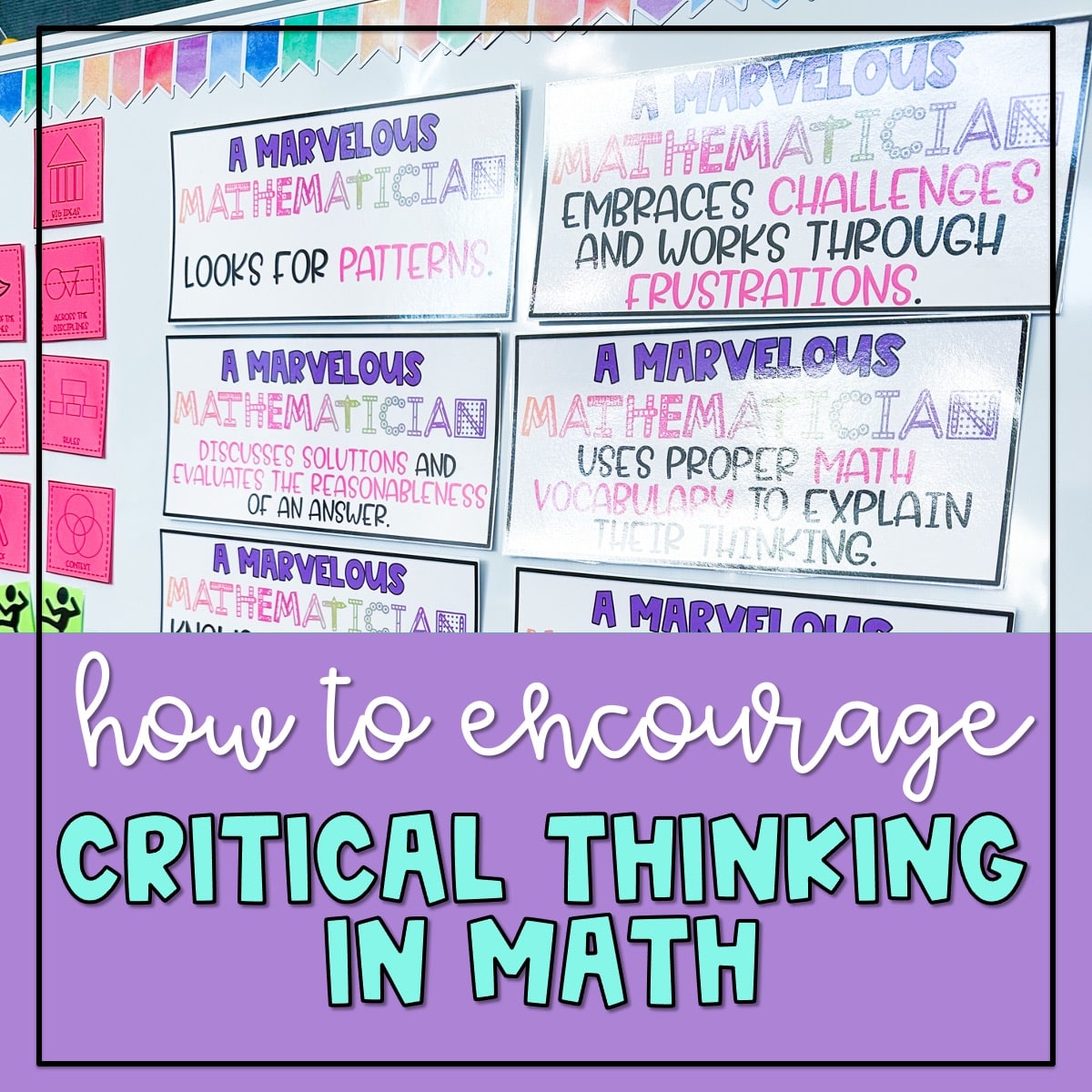
Critical thinking is more than just a buzzword… It’s an essential skill that helps students develop problem-solving abilities and make logical connections between different concepts. By encouraging critical thinking in math, students learn to approach problems more thoughtfully, they learn to analyze and evaluate math concepts, identify patterns and relationships, and explore different strategies for finding the solution. Critical thinking also involves a great deal of persistence. Those are critical life skills!
When you think about it, students are typically asked to solve math problems and find the answer. Showing their work is frequently stressed too, which is important, but not the end. Instead, students need to be able to look at math in different ways in order to truly grasp a complete understanding of math concepts. Mathematics requires logical reasoning, problem-solving, and abstract thinking.
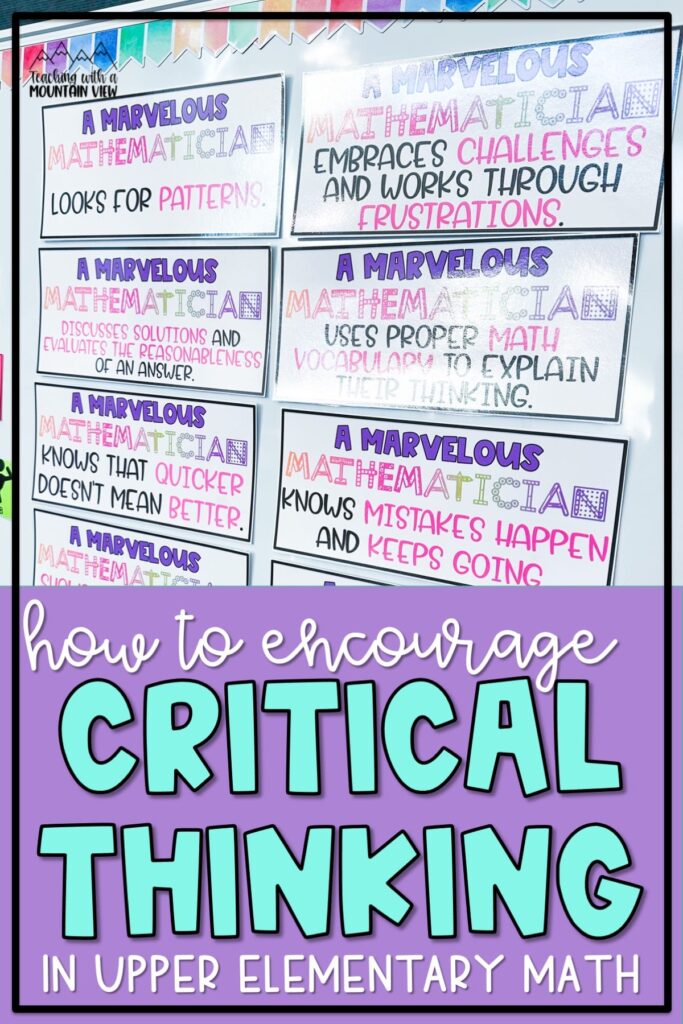
What Does Critical Thinking in Math Look Like?
When I think about critical thinking in math, I focus on:
- Solving problems through logical thinking . Students learn how to break down complex problems, analyze the different parts, and understand how they fit together logically.
- Identifying patterns and making connections. Students learn how to identify patterns across different math concepts, make connections between seemingly unrelated topics, and develop a more in-depth understanding of how math works.
- Evaluating and comparing solutions. Students learn to evaluate which solution is best for a given problem and identify any flaws in their reasoning or others’ reasoning when looking at different solutions
Mathematician Posters
These FREE Marvelous Mathematician posters have been a staple in my classroom for the last 8+ years! I first started using a version from MissMathDork and adapted them for my classroom over the years.
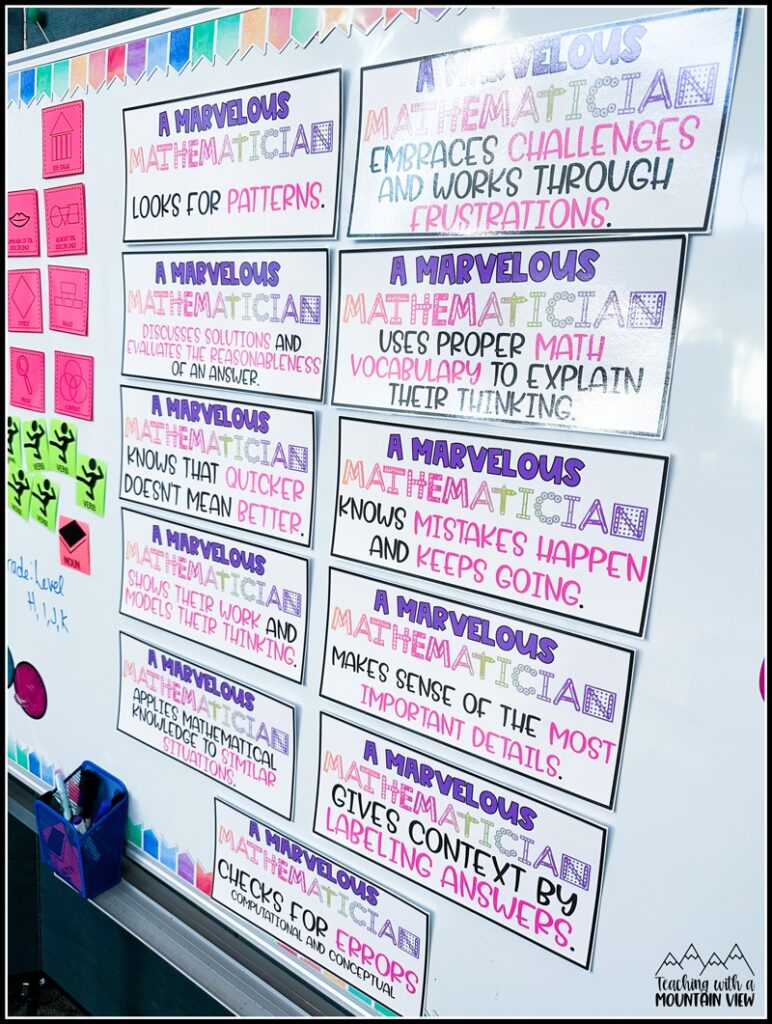
I print, laminate, and add magnetic stickers on the back. At the beginning of the year, I only put one or two up at a time depending on our area of focus. Now, they are all hanging on my board, and I’ll pull out different ones depending on our area of focus. They are so empowering to my mathematicians and help them stay on track!
A Marvelous Mathematician:
- knows that quicker doesn’t mean better
- looks for patterns
- knows mistakes happen and keeps going
- makes sense of the most important details
- embraces challenges and works through frustrations
- uses proper math vocabulary to explain their thinking
- shows their work and models their thinking
- discusses solutions and evaluates reasonableness
- gives context by labeling answers
- applies mathematical knowledge to similar situations
- checks for errors (computational and conceptual)
Critical Thinking Math Activities
Here are a few of my favorite critical thinking activities.
Square Of Numbers
I love to incorporate challenge problems (use Nrich and Openmiddle to get started) because they teach my students so much more than how to solve a math problem. They learn important lessons in teamwork, persistence, resiliency, and growth mindset. We talk about strategies for tackling difficult problems and the importance of not giving up when things get hard.
This square of numbers challenge was a hit!
ALL kids need to feel and learn to embrace challenge. Oftentimes, kids I see have rarely faced an academic challenge. Things have just come easy to them, so when it doesn’t, they can lack strategies that will help them. In fact, they will often give up before they even get started.
I tell them it’s my job to make sure I’m helping them stretch and grow their brain by giving them challenges. They don’t love it at first, but they eventually do!
This domino challenge was another one from Nrich . I’m always on the hunt for problems like this!! How would you guide students toward an answer??
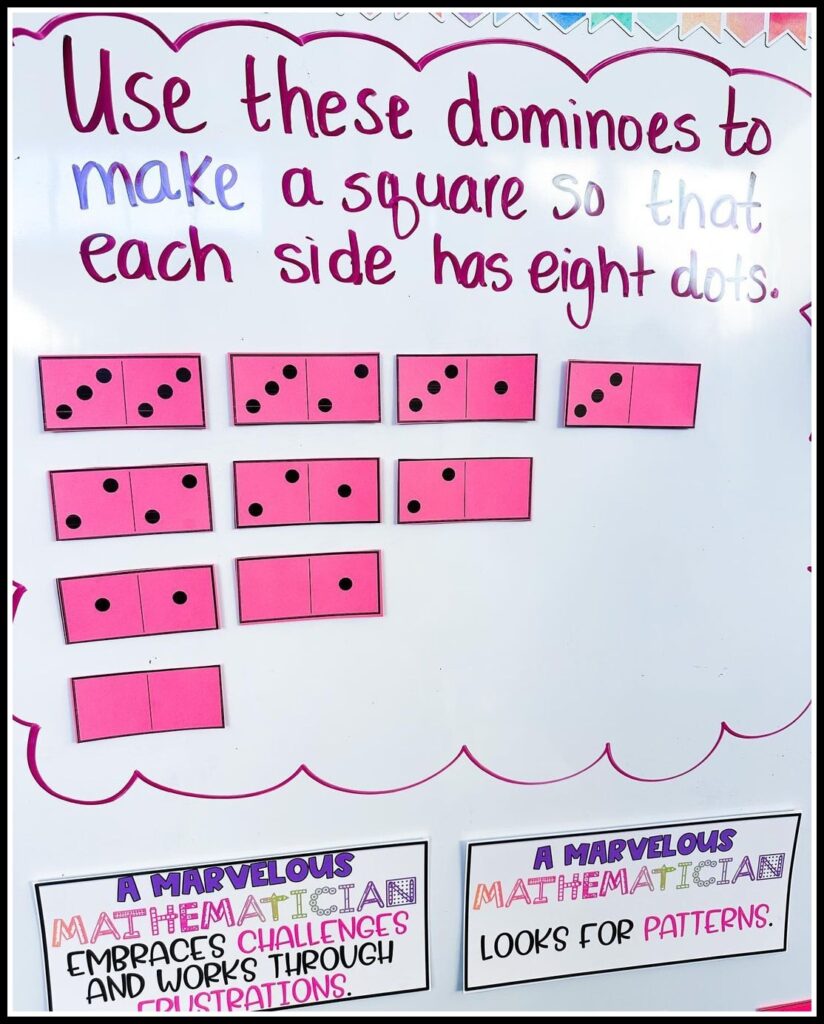
Fifteen Cards
This is a well-loved math puzzle with my students, and it’s amazing for encouraging students to consider all options when solving a math problem.
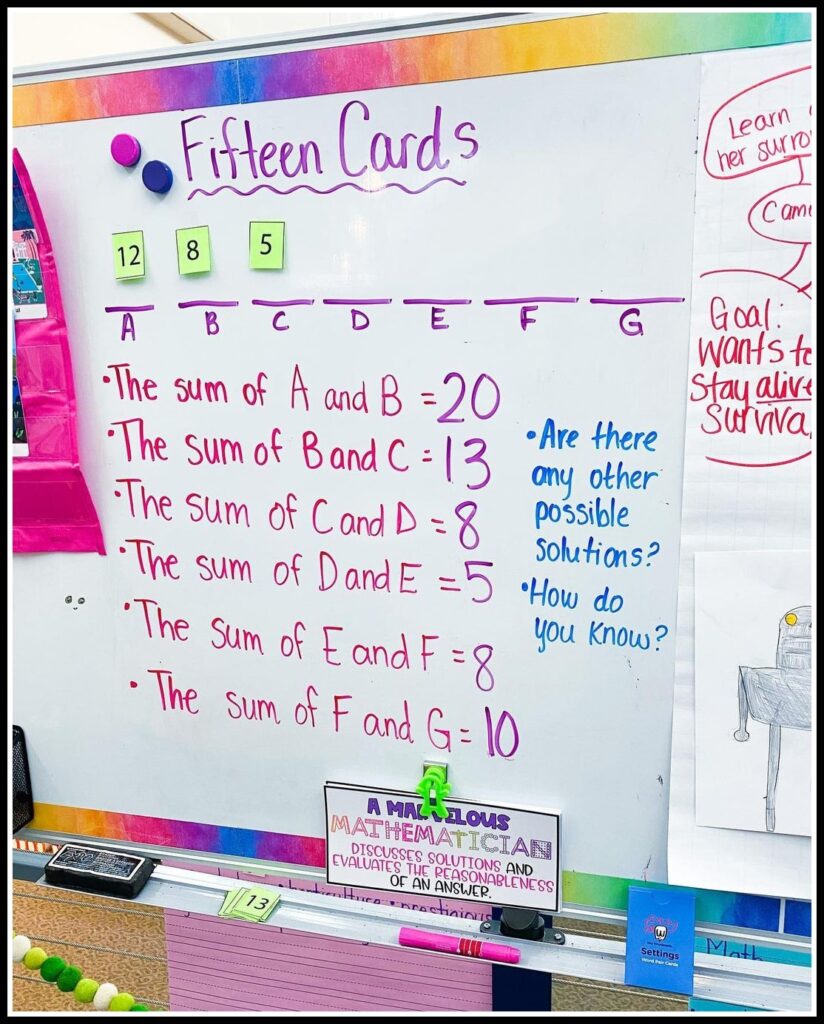
We have number cards 1-15 (one of each number) and only seven are laid out. With the given clues, students need to figure out which seven cards should be put out and in what order. My students love these, and after they’ve done a few, they enjoy creating their own, too! Use products, differences, and quotients to increase the challenge.
This is also adapted from Nrich, which is an AMAZING resource for math enrichment!
This is one of my favorite fraction lessons that I’ve done for years! Huge shout out to Meg from The Teacher Studio for this one. I give each child a slip of paper with this figure and they have to silently write their answer and justification. Then I tally up the answers and have students take a side and DEBATE with their reasoning! It’s an AMAZING conversation, and I highly recommend trying it with your students.
Sometimes we leave it hanging overnight and work on visual models to make some proofs.
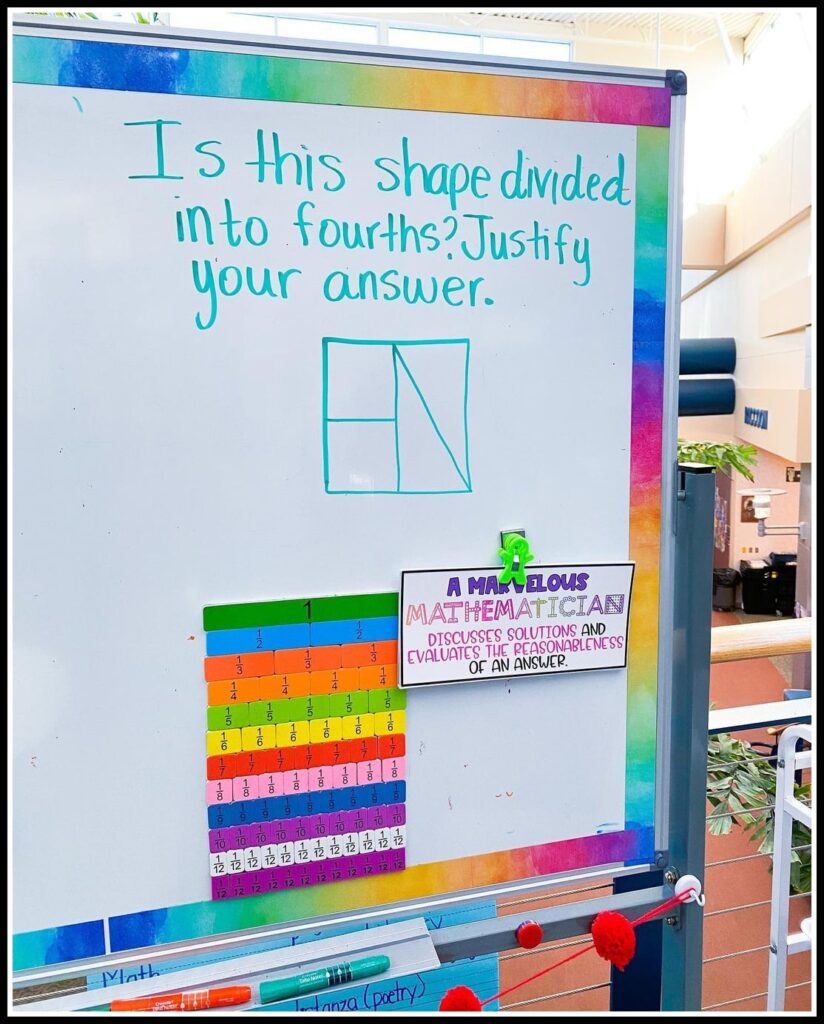
Logic Puzzles
Logic puzzles are always a hit too! You can enrich and extend your math lessons with these ‘Math Mystery’ logic puzzles that are the perfect challenge for 4th, 5th, and 6th grades. The puzzles are skills-based, so they integrate well with almost ANY math lesson. You can use them to supplement instruction or challenge your fast-finishers and gifted students… all while encouraging critical thinking about important math skills!
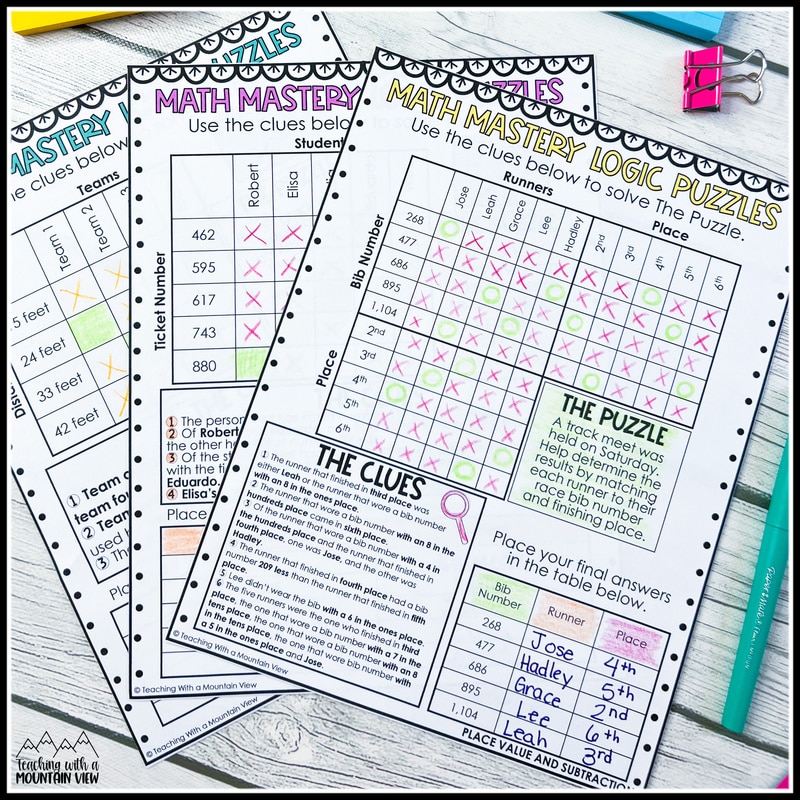
Three levels are included, so they’re perfect to use for differentiation.
- Introductory logic puzzles are great for beginners (4th grade and up!)
- Advanced logic puzzles are great for students needing an extra challenge
- Extra Advanced logic puzzles are perfect for expert solvers… we dare you to figure these puzzles out!
Do you have a group of students who are ready for more of a fraction challenge? My well-loved fraction puzzlers are absolutely perfect for fraction enrichment. They’ll motivate your students to excel at even the most challenging tasks!
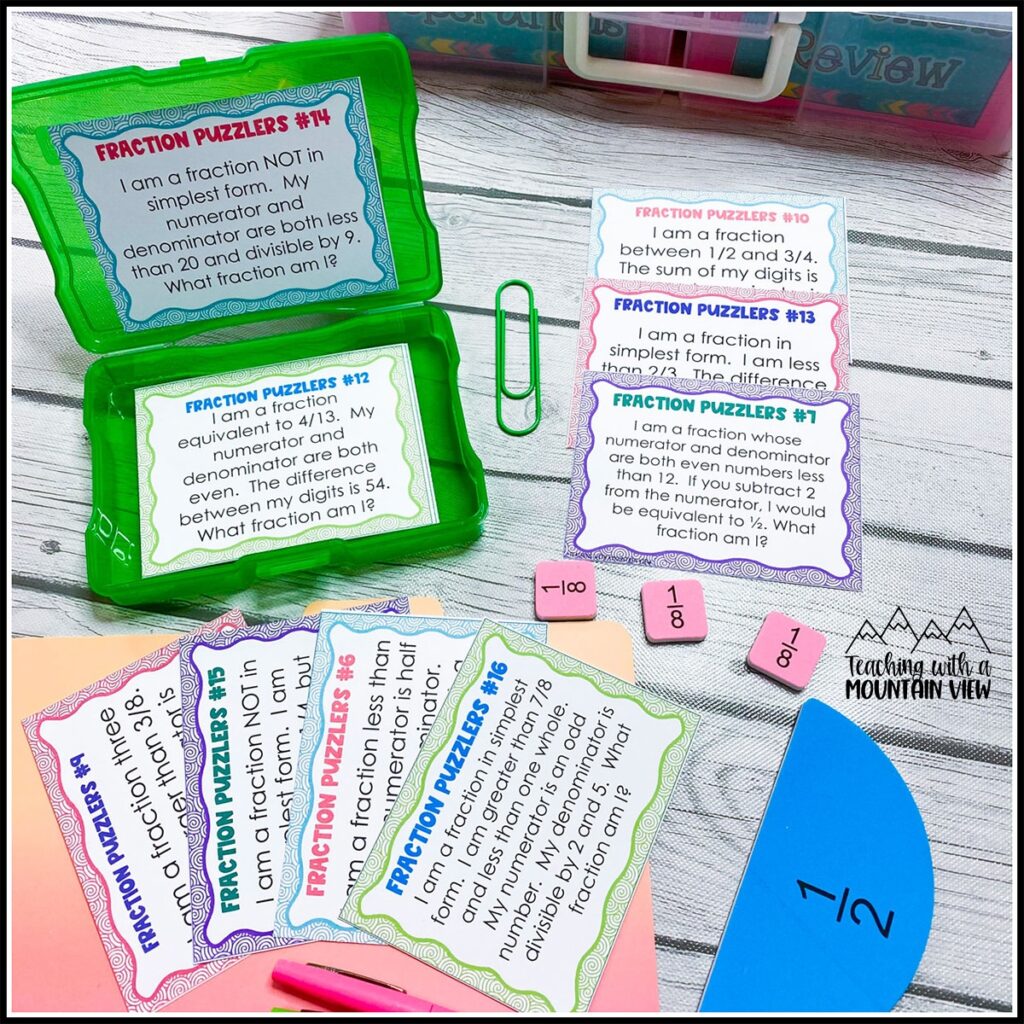
Math Projects
Math projects are another way to differentiation while building critical thinking skills. Math projects hold so much learning power with their real-world connections, differentiation options, collaborative learning opportunities, and numerous avenues for cross curricular learning too.
If you’re new to math projects, I shared my best tips and tricks for using math projects in this blog post . They’re perfect for cumulative review, seasonal practice, centers, early finisher work, and more.
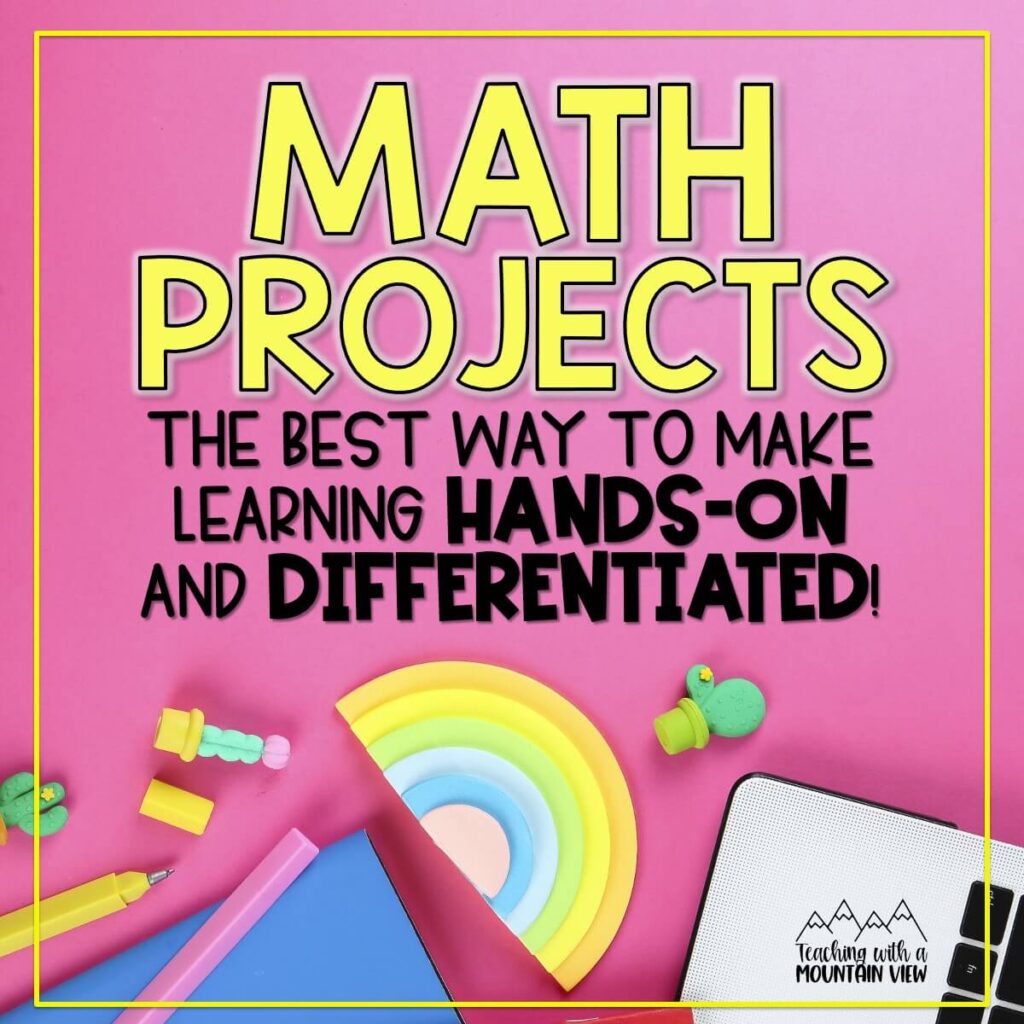
I use both concept-based math projects to focus on specific standards and seasonal math projects that integrate several skills.
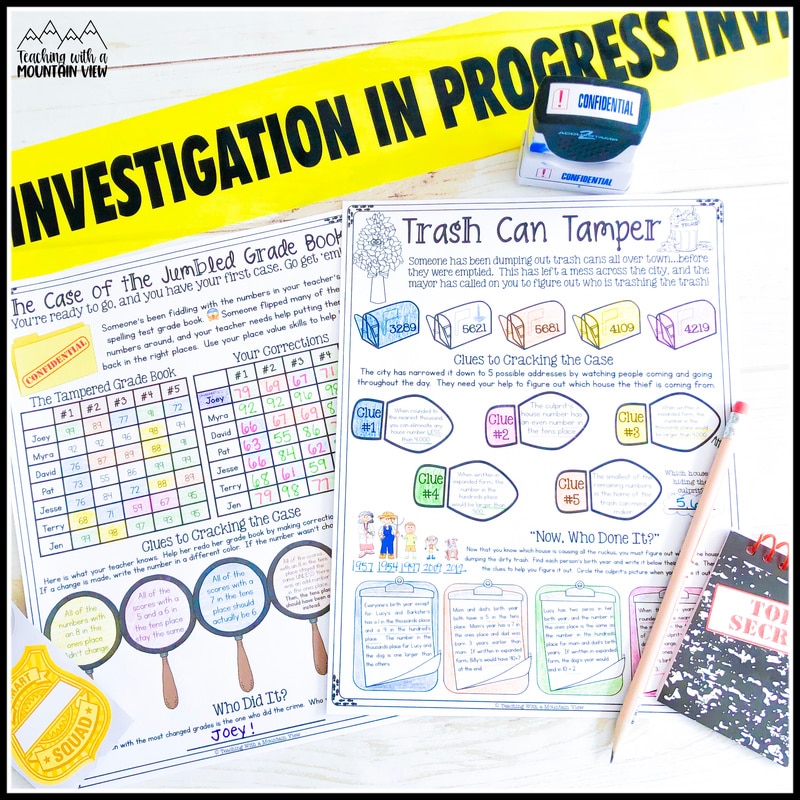
Error Analysis
Finally, error analysis is always a challenging way to encourage critical thinking. When we use error analysis, we encourage students to analyze their own mistakes to prevent making the same mistakes in the future.
For my gifted students, I use error analysis tasks as an assessment when they have shown mastery of a unit during other tasks. For students in the regular classroom needing enrichment, I usually have them complete the tasks in a center or with a partner.
For students needing extra support, we complete error analysis in small groups. We go step-by-step through the concept and they are always able to eventually identify what the error is. It is so empowering to students when they finally figure out the error AND it helps prevent them from making the same error in the future!
My FREE addition error analysis is a good place to start, no matter the grade level. I show them the process of walking through the problem and how best to complete an error analysis task.
When you’re ready for more, this bundle of error analysis tasks contains more than 240 tasks to engage and enrich your students in critical thinking practice.
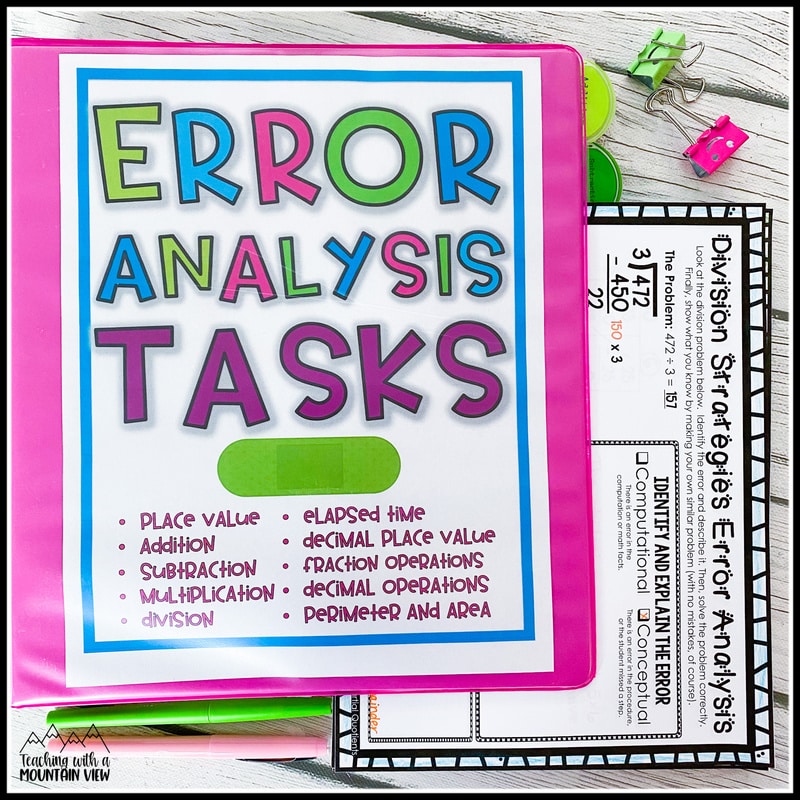
If you want to dig even deeper, visit this conceptual vs computational error analysis post to learn more about using error analysis in the classroom.
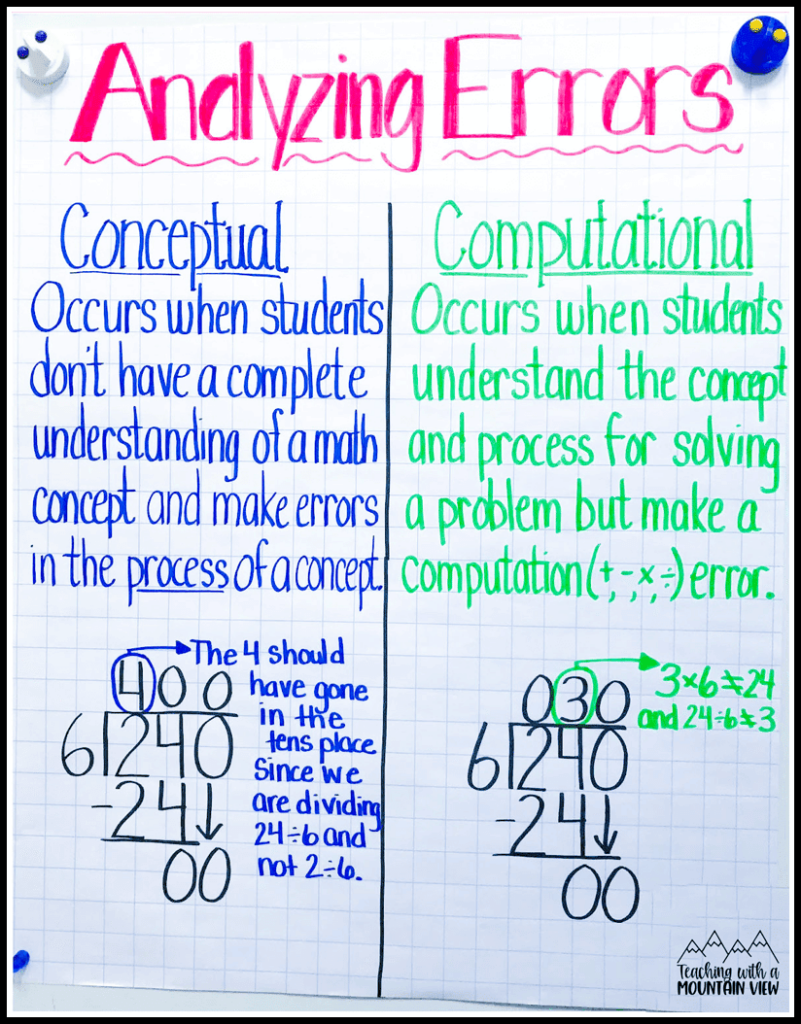
Related Critical Thinking Posts
- How to Increase Critical Thinking and Creativity in Your “Spare” Time
- More Tips to Increase Critical Thinking
Critical thinking is essential for students to develop a deeper understanding of math concepts, problem-solving skills, and a stronger ability to reason logically. When you learn how to encourage critical thinking in math, you’re setting your students up for success not only in more advanced math subjects they’ll encounter, but also in life.
How do you integrate critical thinking in your classroom? Come share your ideas with us in our FREE Inspired In Upper Elementary Facebook group .

Mary Montero
I’m so glad you are here. I’m a current gifted and talented teacher in a small town in Colorado, and I’ve been in education since 2009. My passion (other than my family and cookies) is for making teachers’ lives easier and classrooms more engaging.
You might also like…

Leave a Reply Cancel reply
Your email address will not be published. Required fields are marked *
One Comment
Mary Thankyou for your inspirational activities. I have just read and loved the morning talk activities. I do have meetings with my students but usually at end of day. What time do you

©2023 Teaching With a Mountain View . All Rights Reserved | Designed by Ashley Hughes
Username or Email Address
Remember Me
Lost your password?
Review Cart
No products in the cart.
Sharpen your critical thinking (CAE Speaking Part 3)
- Exam Tasks (FCE/CAE/CPE...)
Grammar - conjunctions

This is a standalone lesson but it can also be used as part of the set titled:
- Forming logical arguments
LESSON OVERVIEW
With this lesson plan, students evaluate the validity of arguments using the information from a video about logical fallacies. They also practise conjunctions and do a Cambridge CAE Speaking Part 3 activity.
VOCABULARY & VIDEO
At the beginning of the lesson, students discuss what critical thinking is. They will use the ideas from the discussion to do the CAE Speaking Part 3 activity in the last part of the lesson. Then, students replace seven words in context with their synonyms. The words are related to critical thinking and arguments (e.g. faulty – flawed, refute – counter ). Students also share their thoughts about two of the statements which they agree with or relate to personally. Next, students read six arguments and decide what makes them faulty and how they would refute them. After that, they watch the first part of the video and explain what a logical fallacy is. After watching the second part, students discuss the logical fallacies from the video . They also look at the arguments from the beginning of the lesson and decide which logical fallacies they exemplify. Students watch the second part of the video again to check their answers.
CONJUNCTIONS & CAE SPEAKING PART 3
In the activity, students read nine sentences and choose the correct conjunctions (e.g. whereas, since, and yet ). Then, they need to rewrite arguments using the words in brackets and make any necessary changes to the statements. After that, students need to evaluate the validity of the arguments they transformed and decide whether they display any logical fallacies. Finally, students do a Cambridge CAE Speaking Part 3 task. They need to talk about the importance of critical thinking in some professions, and then decide which of them least requires the skill of critical thinking. While doing the task, students need to use at least three conjunctions practised in the lesson. The worksheet also contains two more CAE Speaking Part 3 tasks which the teacher might decide to do at the end of the lesson or at the beginning of the next one.
Subscribe to unlock these and many other Standalone lesson with the Premium plan
Leave a Reply Cancel reply
You must be logged in to post a comment.
Such a great lesson!
Wow!! What an inspiring & thought-provoking lesson!! Thank you!!
Thank you, Irina!
ESL Brains, thank you for all your lessons! They’re just the best!
We’re really happy to hear that! Thanks 🙂
Great lesson, my student loves it! However, the last 2 slides with CAE Speaking activities are hidden during the presentation. Could you unhide them and make them appear, please? Peter
Thanks for the comment! We purposefully set these slides to skip because these are extra tasks. There are two ways out of this: make your own copy of the e-lesson plan and unclick the skip option OR exit the presentation mode on slide 36, go to slide 37 and start the Present mode again. In such a case, when you press space or click the mouse button, you will get to the other skipped slide before the thank you page appears.
This is phenomenal!
Thanks, Liam!
👏👏👏👏 Great lesson!
👏👏👏👏 A really fun and beneficial lesson.
Thanks! I’m really happy you find it useful 🙂
This lesson is just immaculate!
Thank you, Vadim 🙂
An excellent lesson about critical thinking!!! Well paced and developed and so interesting for our students these days!!! Thank you!
Thank you! I’m glad you like the lesson 🙂
Ewa, your lessons are flawless. I simply loved this one.
That was superb!!
Awesome, thanks!
Browse other materials recommended for you

This is why we have accents (pronunciation activities)
Engage in the exploration of accents and pronunciation! Students talk about how they feel speaking a foreign language, explore vocabulary to discuss accents and practise pronunciation skills.

Lone wolf or social butterfly? Understanding personalities
With this lesson, students talk about personality types, revise adjectives to describe themselves and watch a video about how birth order affects a person. They also brainstorm why people change their personalities and discuss whether they agree with different opinions.

Financial crimes
In this lesson, students practise vocabulary related to financial crimes and watch a video about money laundering. They also discuss real cases of financial fraud, read a film synopsis and talk about their personal opinions.

Brave new influencers
With this Flipped lesson, advanced students get a great chance to revise and practise grammatical aspects, learn collocations connected to social media activity and have engaging conversations about AI influencers.

Let’s talk money
With this speaking lesson, students talk about financial literacy, listen to excerpts from a podcast on the topic and discuss their experiences and perspectives. They also analyse money-related situations and come up with solutions.

When familial meets professional
In this lesson, students reflect deeply on work-family dynamics, explore nuances of nepotism, and enrich vocabulary through engaging discussions. Students also listen to excerpts from a podcast to spark critical thinking.

Save coral reefs!
With this lesson, students will dive into the different uses of ‘as’ in phrases and statements. They will also explore the realm of coral reefs and watch an inspiring informational video.

What if we redefined ambition?
Embark on a thought-provoking exploration of ambition! This lesson encourages students to critically examine traditional notions of success and consider alternative perspectives on personal fulfilment and well-being.

It’s the cheesiest time of the year!
This lesson not only enhances language skills but also encourages students to think about cultural aspects of the holiday season while having fun getting in the Christmas spirit. Have a laugh together talking about cheesy Christmas films and activities!
Is there a minimum subscription period if I choose a monthly subscription?
No, there’s no minimum required number of subscription months. You can cancel any time you want. Basically, you can sign up and then cancel your subscription the next day, which will mean you have access for 1 month and won’t be charged again.
What currencies can I pay in for my subscription?
Our default currency is USD (American dollar), but you can also pay in EUR (euro), GBP (British pound sterling) or PLN (Polish zloty). You can change the currency you want to pay in at the Pricing page before selecting a subscription plan.
How can I edit an e-lesson plan?
You can get your own editable copy of an e-lesson plan and make changes to it. To do so, either (1) make a copy of it on your Google Drive (preferable method) or (2) download it in a Powerpoint format (but formatting might be a bit off so we can’t guarantee that it will work well).
Username or Email Address
Remember Me

IMAGES
VIDEO
COMMENTS
basically. in essence; at bottom or by one's (or its) very nature. It is basically learning skills used to improve one's thinking. seek. try to locate, discover, or establish the existence of. problems. learn new skills and/or data, knowledge, and/or improve upon one's current set of skills and/or data.
WAYS TO PLAY. LEVEL 1: KNOWLEDGE-BUILDING. TAKE TURNS DRAWING A CARD COLLECT 15 TO WIN. "Bias Blitz". Announce the cognitive bias name on the top of the card. Players shout out the definition based on the name. The first to guess correctly wins the card. If no one does, reveal the definition and return the card to the draw pile.
Word analogies are not only effective at building vocabulary, they also develop critical thinking skills. Unlike vocabulary activities that require students to memorize word definitions, word analogies develop a deep understanding of words by exploring meaningful relationships. When students from logical connections between words, they create a ...
Tell your students to work with the word, break it apart, and think about each piece. Ex. Ask students what that means. They'll probably say "former," as in ex-president. They might also say "out," as in "exit.". So, that's the first piece, but let's set it aside and consider the next part. Position.
Little Alchemy 2. Flex alchemical muscles in amusing, discovery-based puzzler. Bottom Line: This amusing puzzle game encourages creativity, perseverance, and systems thinking, and with creative integration it can build interest in math, science, history, and literature. Grades: 6-12. Price:
So, let's embark on a journey to boost vocabulary and critical thinking skills with a collection of category activities tailor-made for our middle-grade word wizards. Odd One Out: Spot the Intruder! Start the vocabulary fun with category activities inspired by the classic game of "Odd One Out."
The games are listed in order of critical thinking required; the earlier games review the basics and the later games require deeper critical thinking. Get a printable list of these vocabulary games. Simple List The Rules: Divide students into two (or more) teams. Give each team one minute to list as many words as possible from the current unit ...
After the word list, there are six critical thinking activities to help kids practice the meaning of each vocabulary word. Fill in the blank- In the first activity, kids read the sentence and choose which of the three wordss completes the sentence.In another activity, they fill in the blank, selecting a word from the word bank.
Semantic reasoning pairs critical-thinking, multiple visual examples, and language-based instruction to teach vocabulary words. Conclusions: This article provides a description of semantic reasoning as an evidence-based vocabulary teaching approach that can be used in contextualized language intervention, particularly with adolescent students.
CRITICAL THINKING. Frank C. 10 words 0 learners Learn words with Flashcards and other activities. Definition First. Print Flashcards. ... Assign activities Assign learning activities including Practice, Vocabulary Jams and Spelling Bees to your students, and monitor their progress in real-time. Full list of words from this list:
This is a fundamental problem in human life. To argue in the critical thinking sense is to use logic and reason, and to bring forth facts to support or refute a point. It is done in a spirit of cooperation and good will. argument: A reason or reasons offered for or against something, the offering of such reasons.
Other Critical Thinking Activities. Jigsaw—Developing Community and Disseminating Knowledge: Learners take on the role of "experts" or "specialists" of a particular topic. Then a panel of experts is assembled to get the larger picture. K-W-L Charts—Assessing What We Know/What We Still Want to Learn: Charts to document "What I Know ...
Free critical thinking task cards. Sponsored. Spring Jokes Cryptogram Code Breaker Worksheets Fun Activity for Spring 2024. Teacher Ever Creative. $4.00. Create Your Own World, Environmental Project. Awildocean04. $2.00. 2D Shape Pattern Block STEM Challenge Cards.
activities based on brain-based learning and critical thinking. This session will: • explore how to assess students' vocabulary knowledge and determine what words to teach • discuss how the brain learns and stores words • share and demonstrate instructional strategies including graphic organizers, word study, word sorts, and games
Vocabulary Games For The Win! Children enjoy playing games. When you devote time to game-based or play-based learning, your child will develop critical thinking skills, motivation, and goal-setting abilities. As they play games that improve vocabulary and literacy, their confidence will also grow.
CRITICAL THINKING BUNDLE Triads 3.0 Activity Vocabulary Literacy Center. Created by. Barbara Evans. TRIADS are fun filled vocabulary developers that engage your students in critical thinking while exercising the higher levels of Bloom's Taxonomy - analysis, evaluation, and creation. They also help your students develop word relationships.
These escape room games are designed to help exercise problem-solving, critical thinking, and focusing skills. It is a great way to keep the students busy and help build/improve essential skills. There are 4 Fun Unique Levels of the Maze Run to choose from. Each level is different and as the levels increase.
Strategies for Cultivating Critical Thinking in ESL Learners. 1. Promoting Questioning Techniques: Encourage students to ask and answer open-ended questions. Incorporate activities where students have to articulate their thoughts, provide justifications, and evaluate different perspectives. Questioning Technique.
The Critical Thinking Co. publishes PreK-12+ books and software to develop critical thinking in core subject areas. ... Critical Thinking Activities to Improve Writing Gr. 4-12+ ... Science Vocabulary Crossword Puzzles Gr. 4-6 ; Sciencewise Gr. 4-12+ Scratch Your Brain ...
8. Scrabble or Word Games. Board games, especially ones like Scrabble, are fun vocabulary activities that can significantly enhance a child's word bank. These games challenge kids to think of different words and combinations, promoting strategic thinking alongside vocabulary enhancement.
Tic-Tac-Toe and Concentration Games. Tic-Tac-Toe can be adapted for vocabulary instruction by requiring students to define or correctly use a vocabulary word in order to place their X or O on the game grid. This method turns a simple game into a powerful tool for reinforcing word meanings and usage.
Critical thinking is more than just a buzzword… It's an essential skill that helps students develop problem-solving abilities and make logical connections between different concepts. By encouraging critical thinking in math, students learn to approach problems more thoughtfully, they learn to analyze and evaluate math concepts, identify patterns and relationships, and explore different ...
VOCABULARY & VIDEO. At the beginning of the lesson, students discuss what critical thinking is. They will use the ideas from the discussion to do the CAE Speaking Part 3 activity in the last part of the lesson. Then, students replace seven words in context with their synonyms.